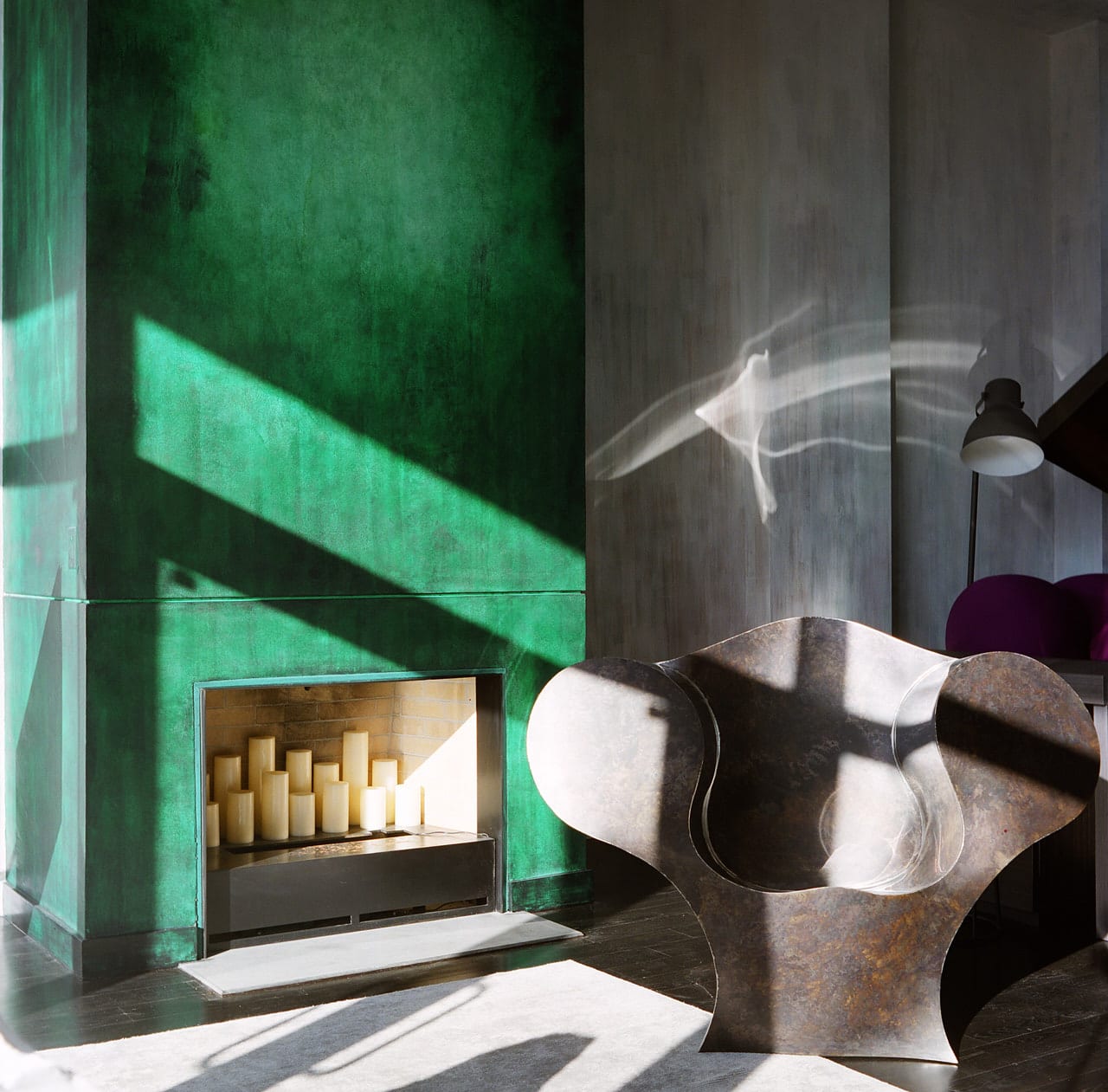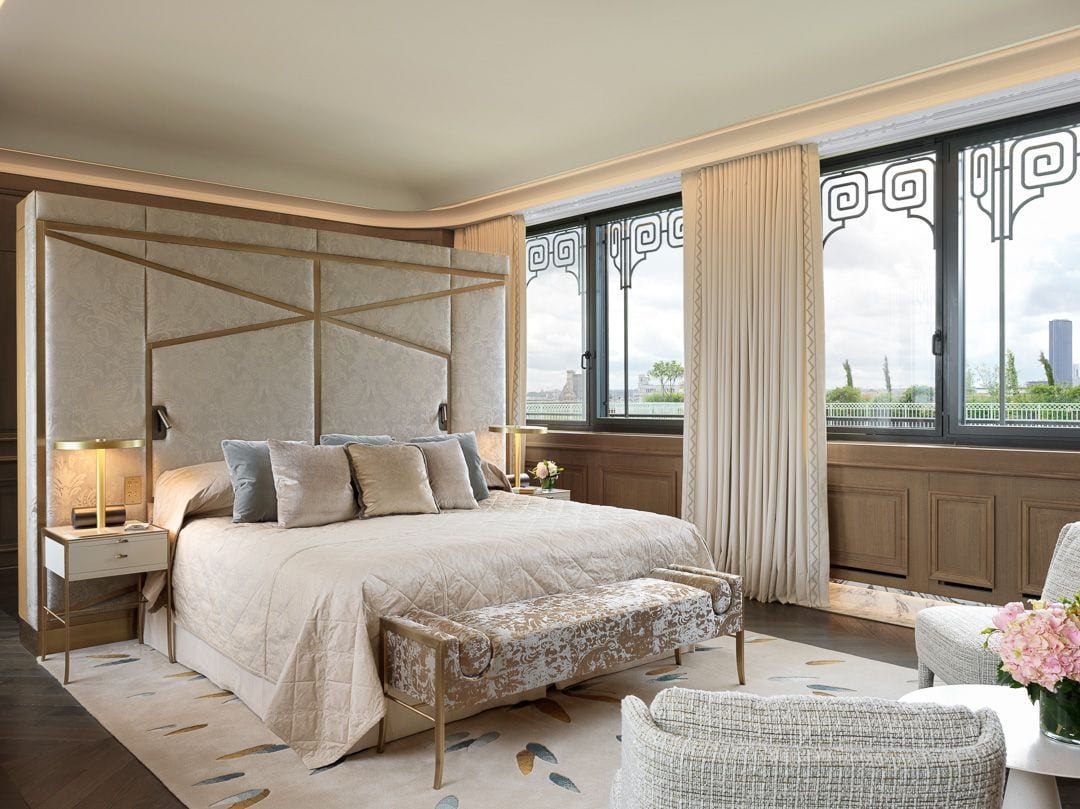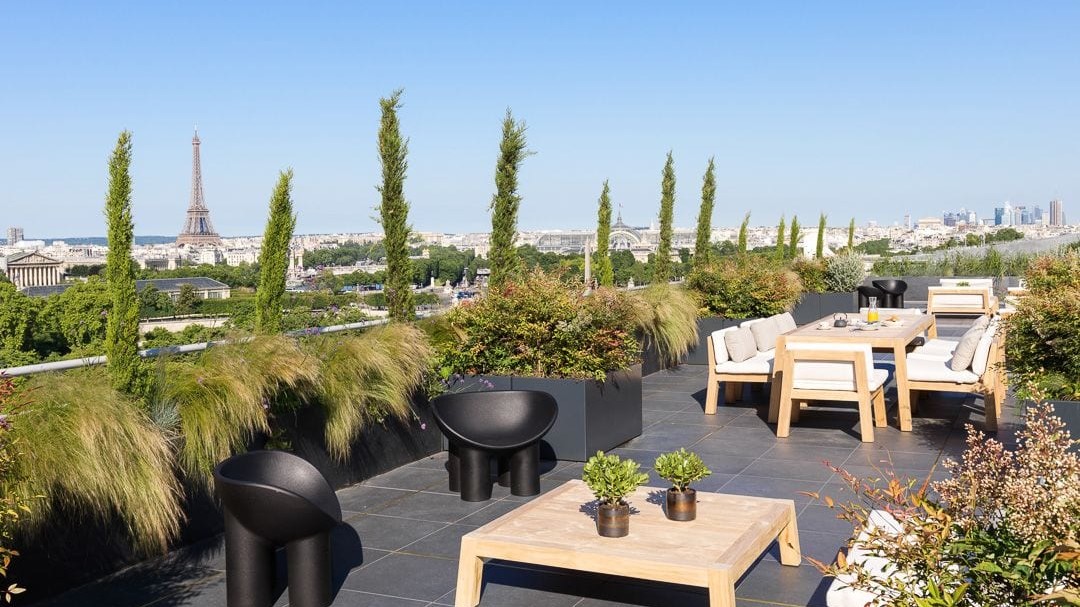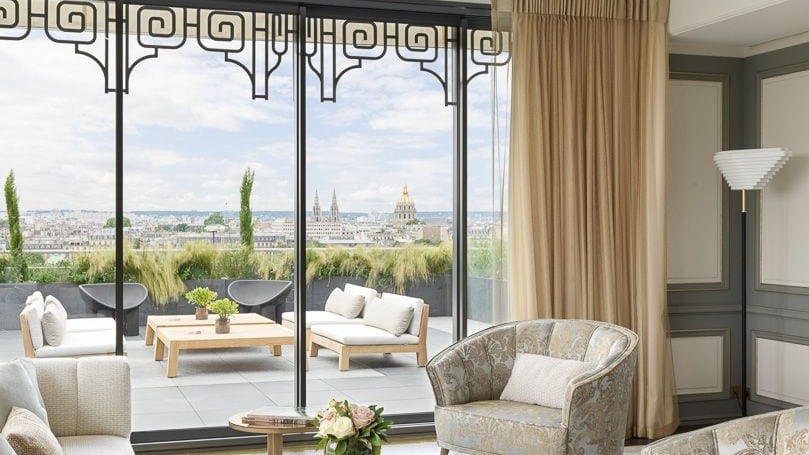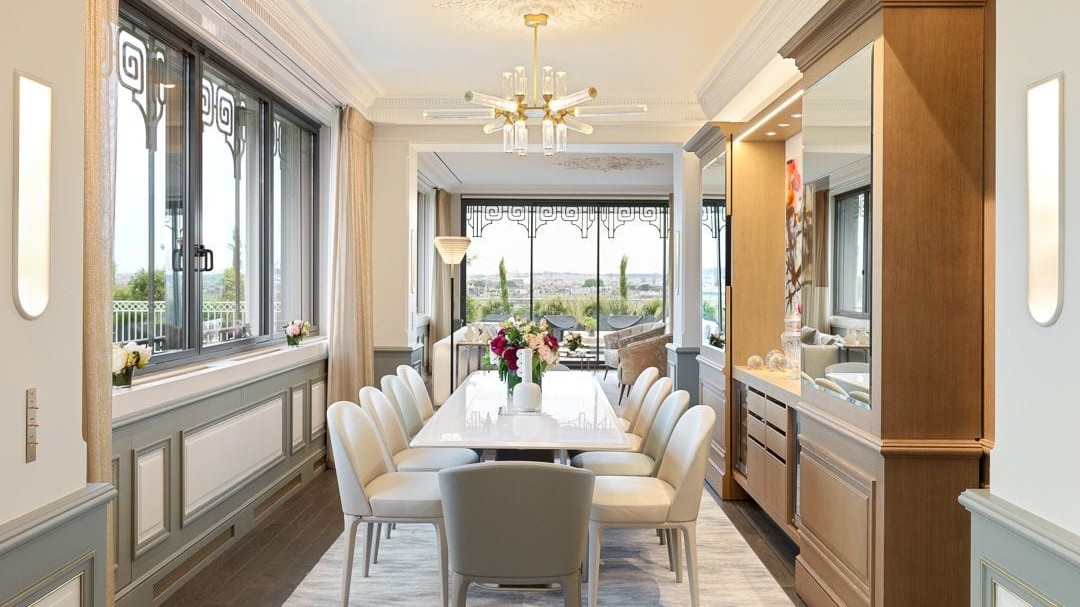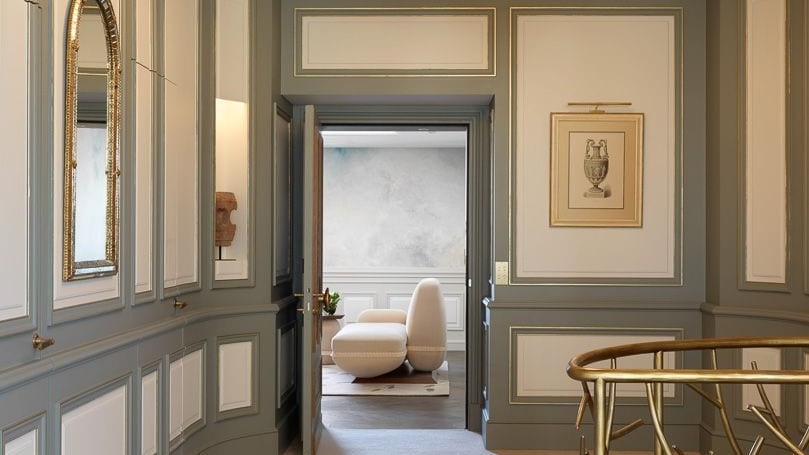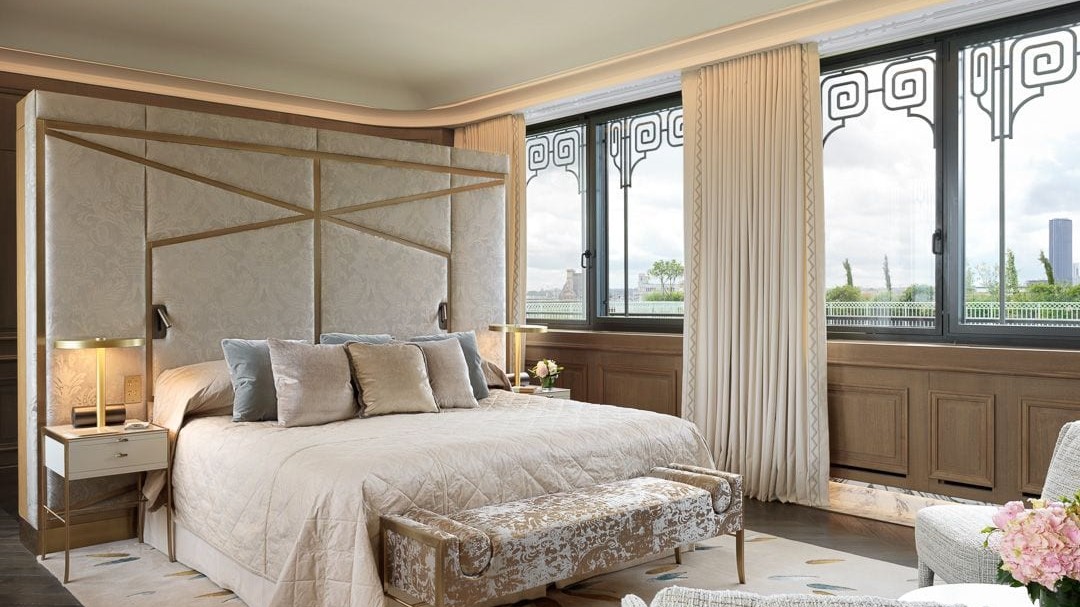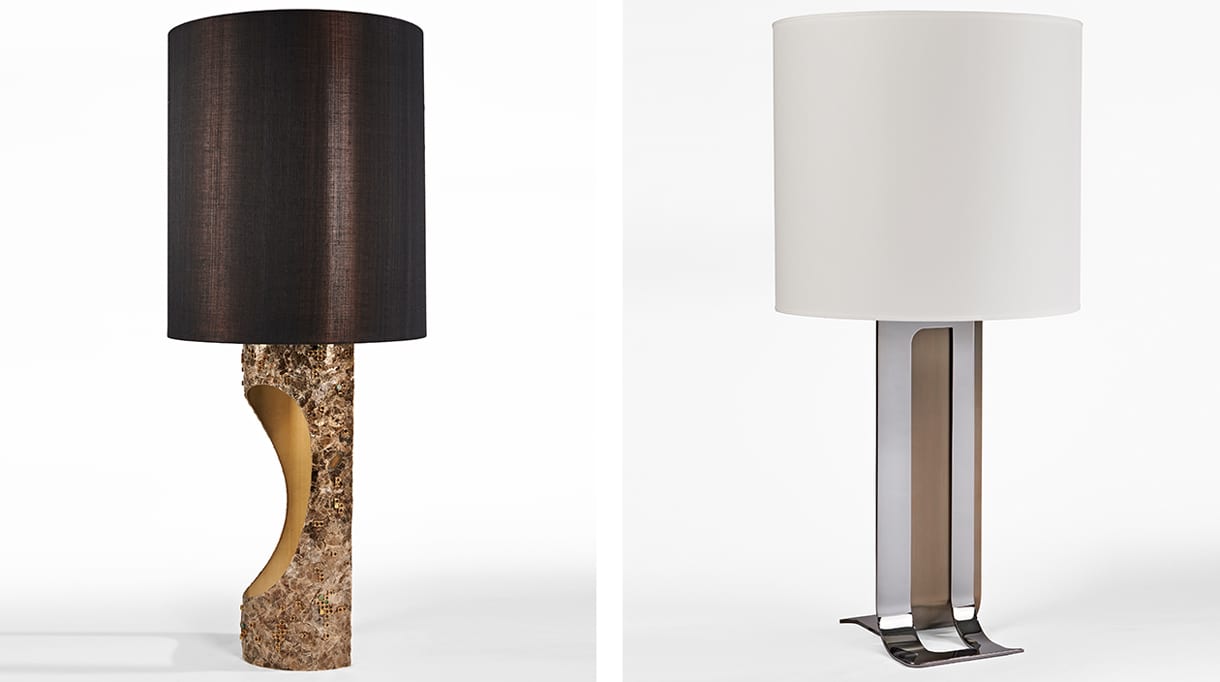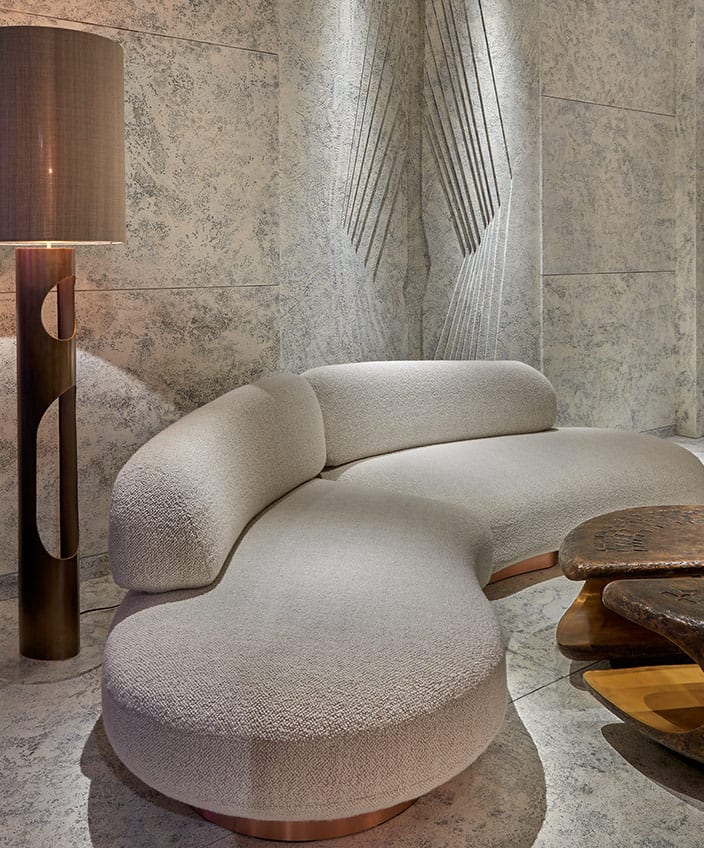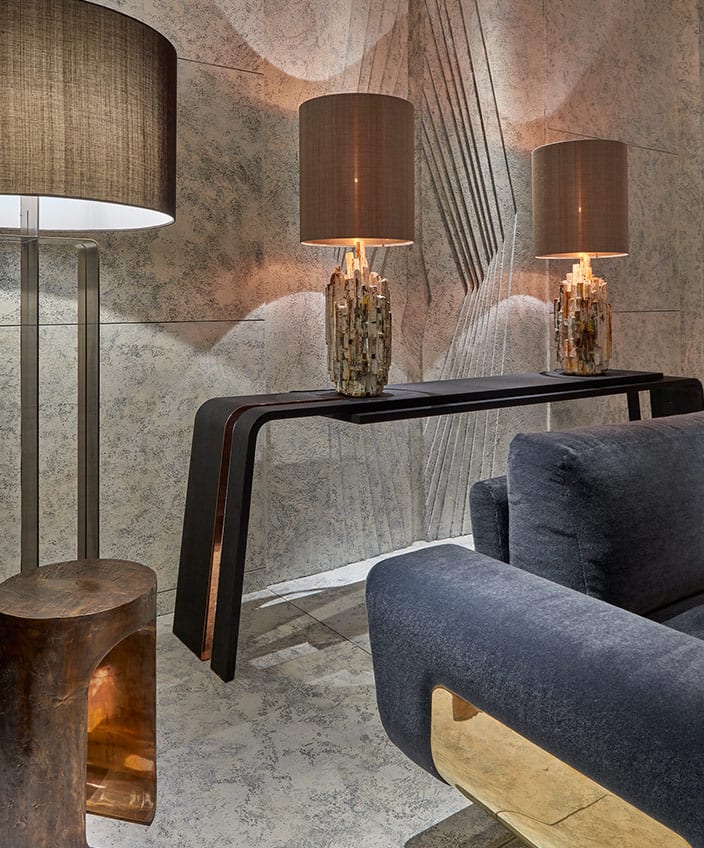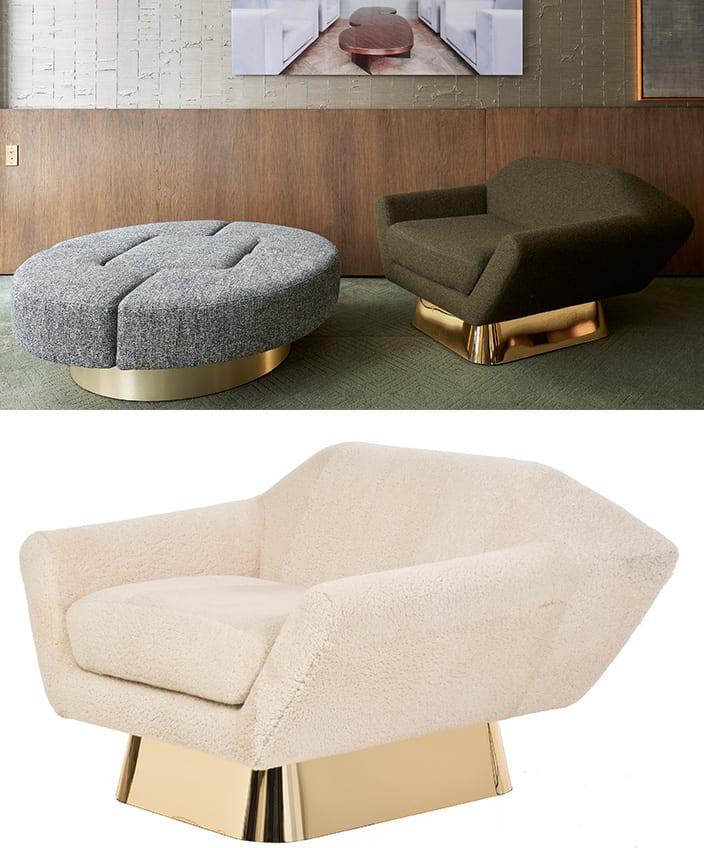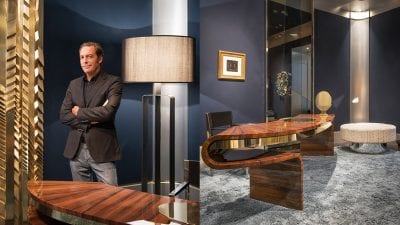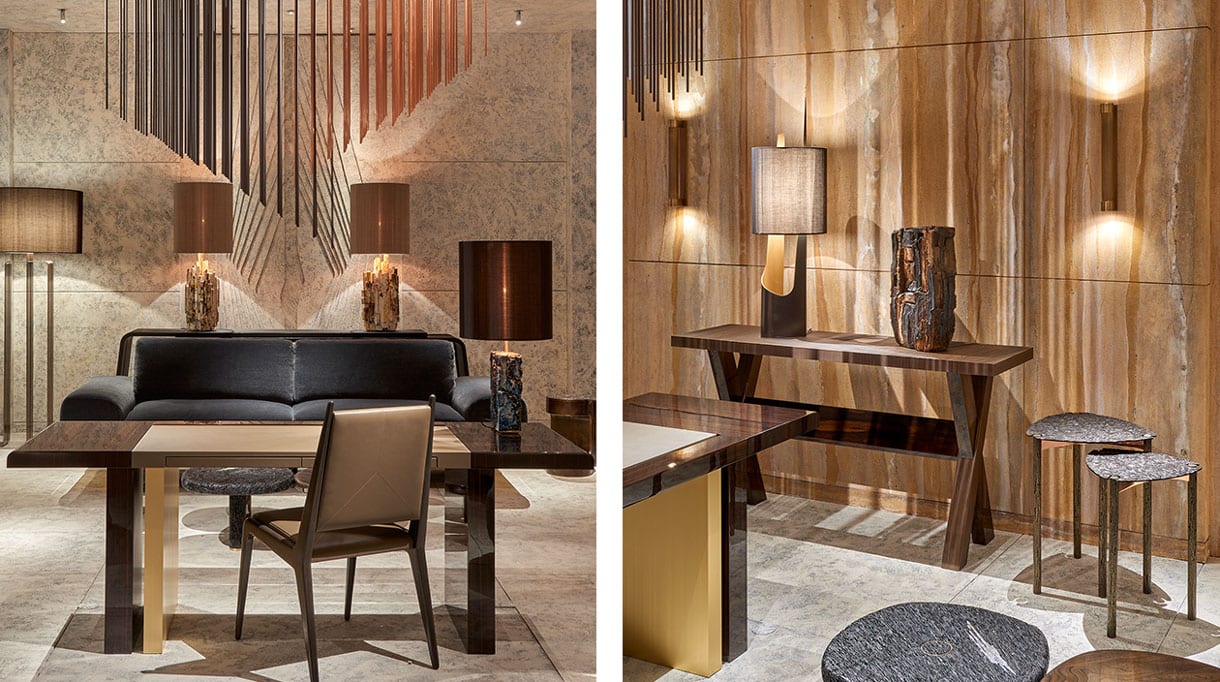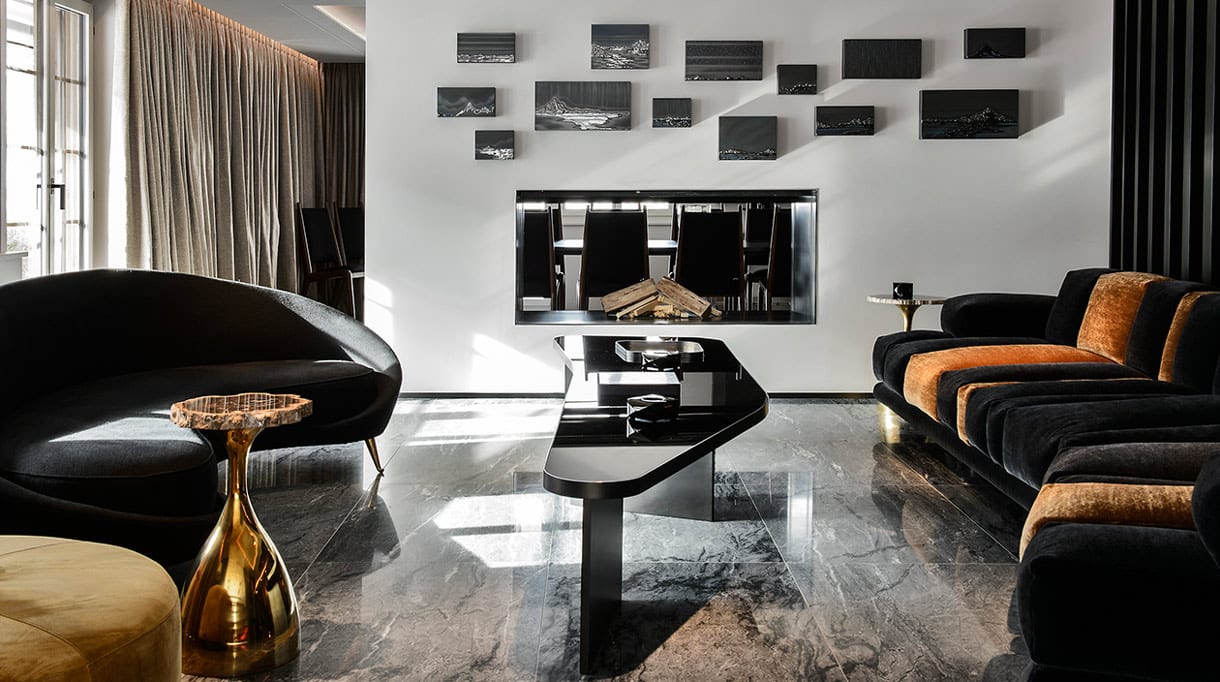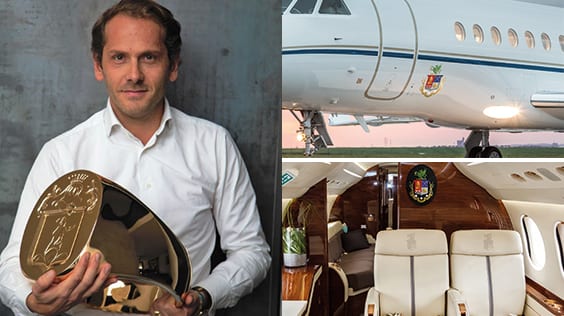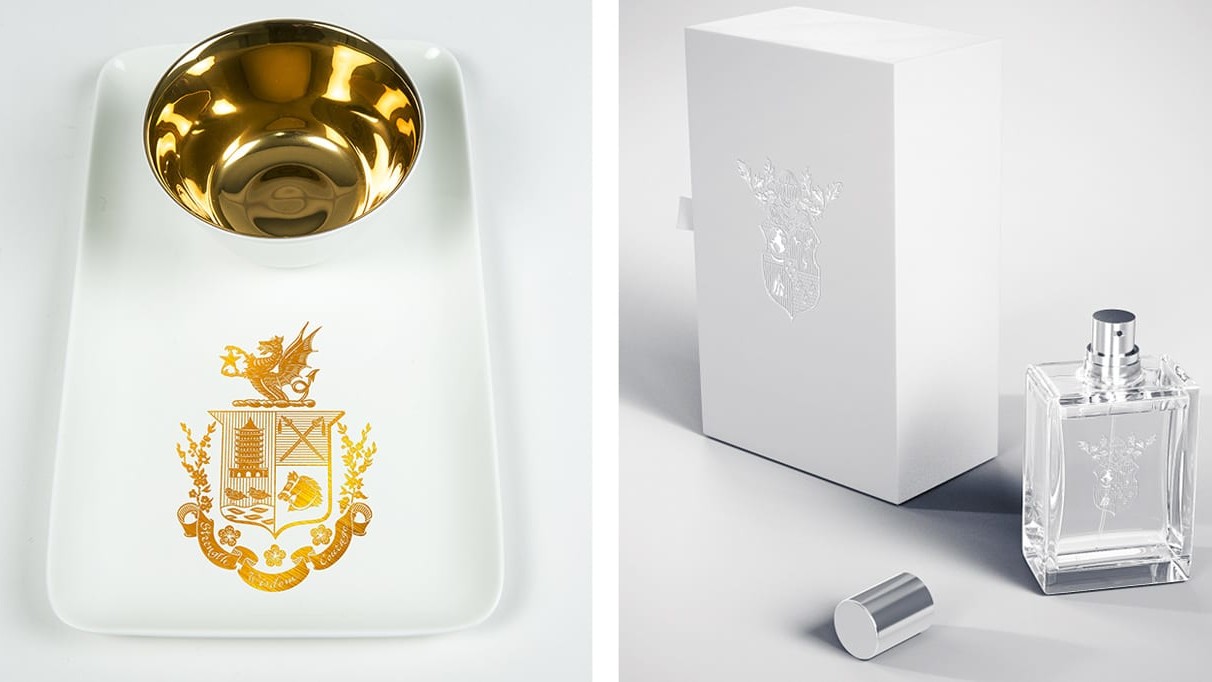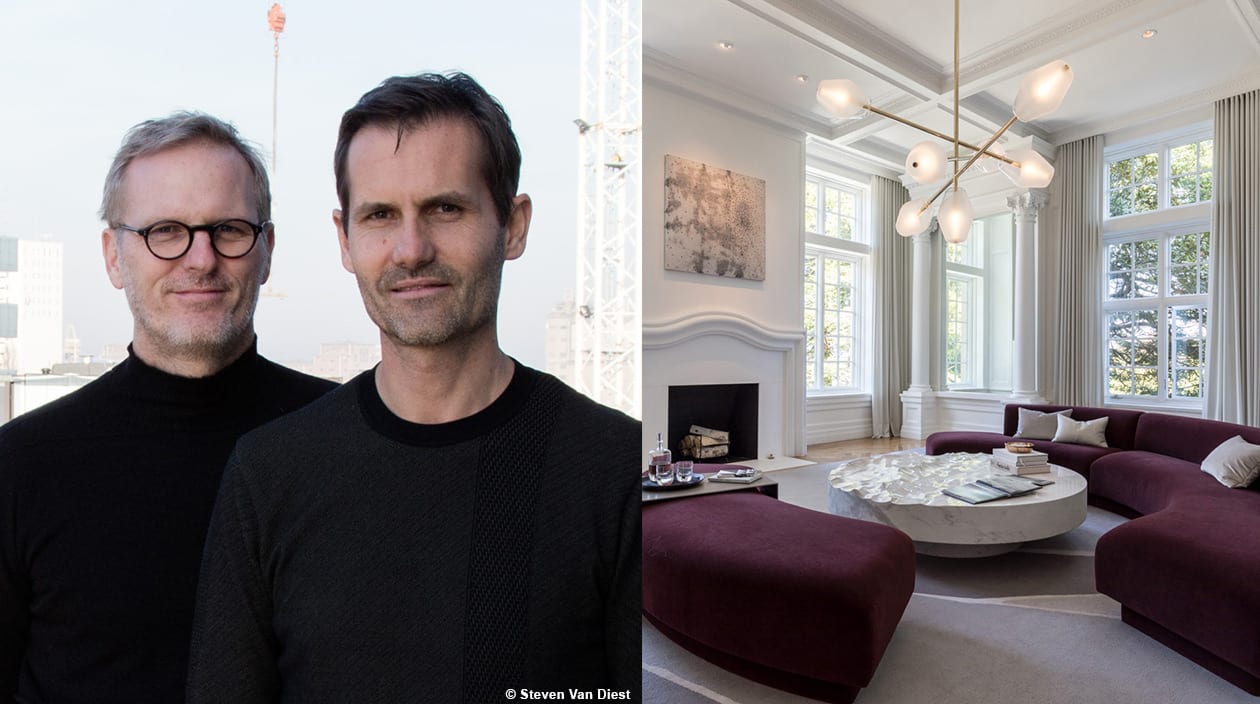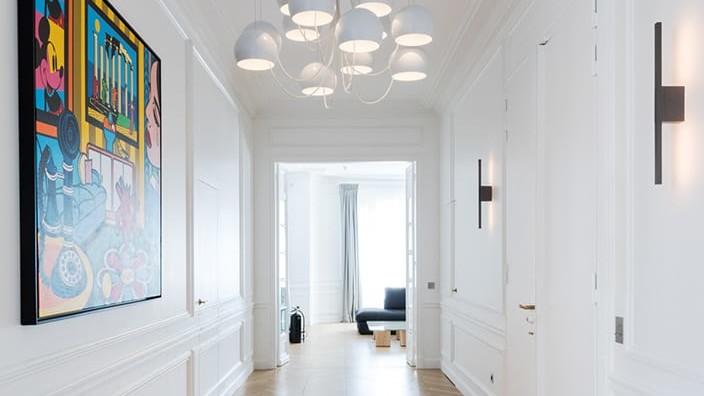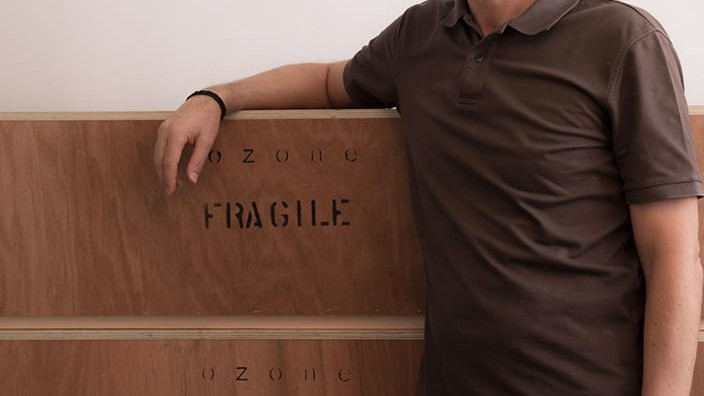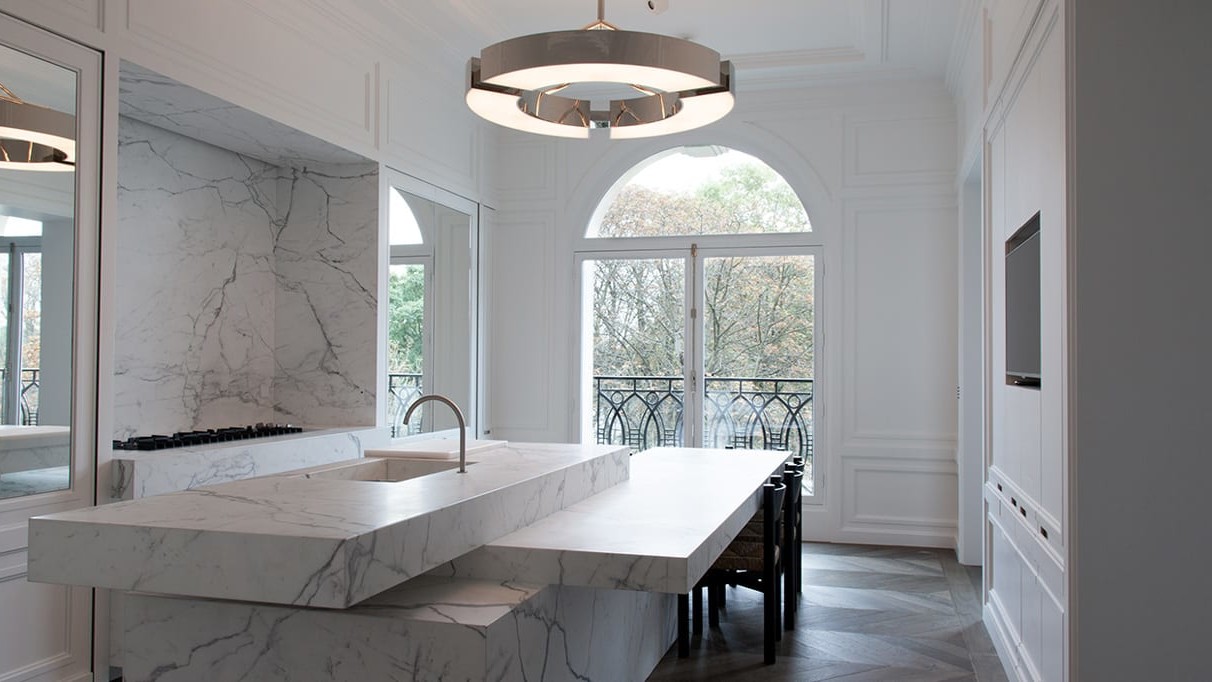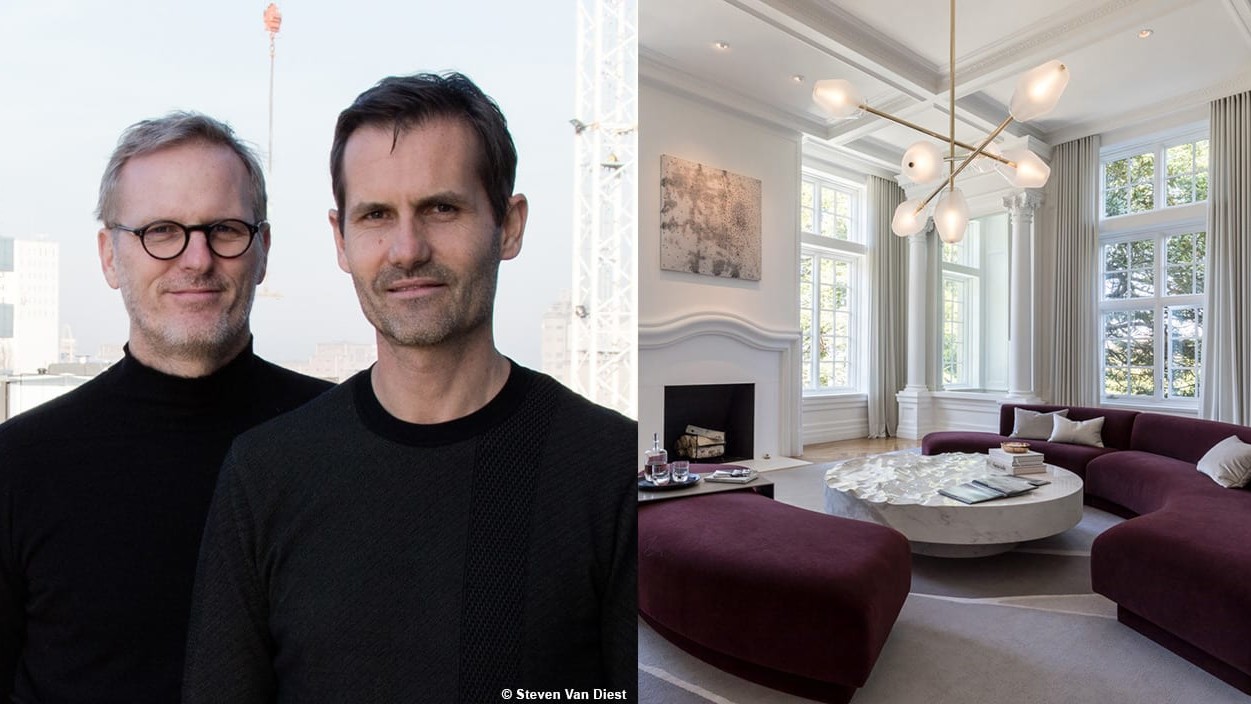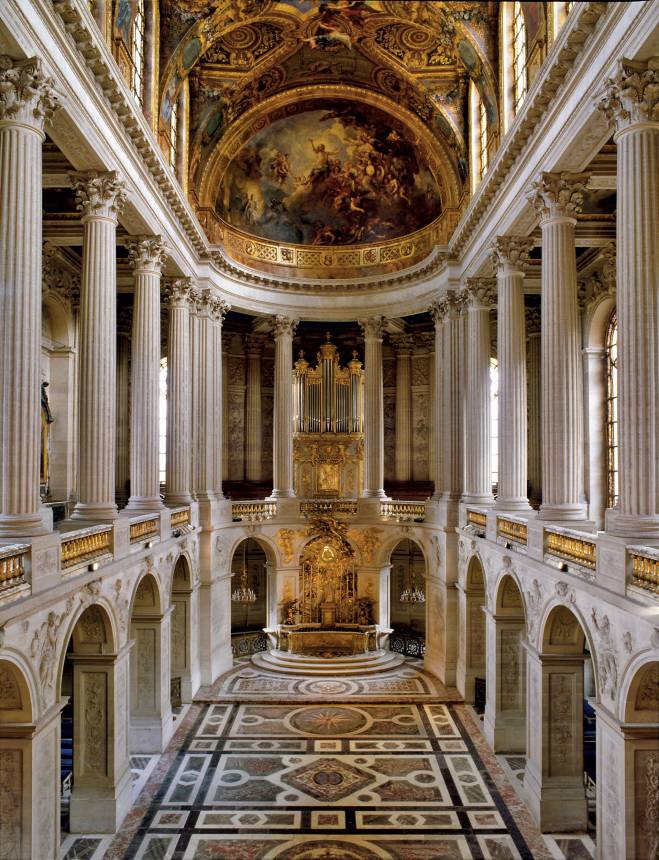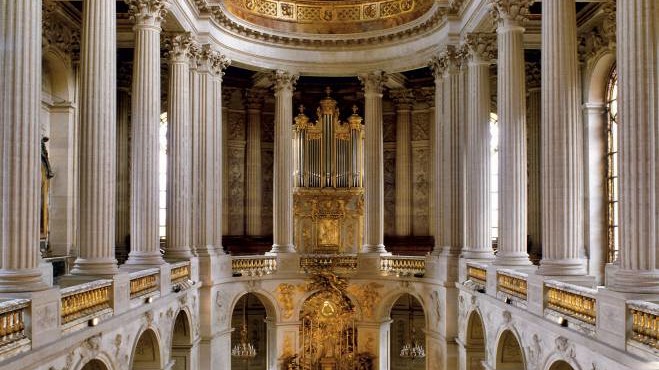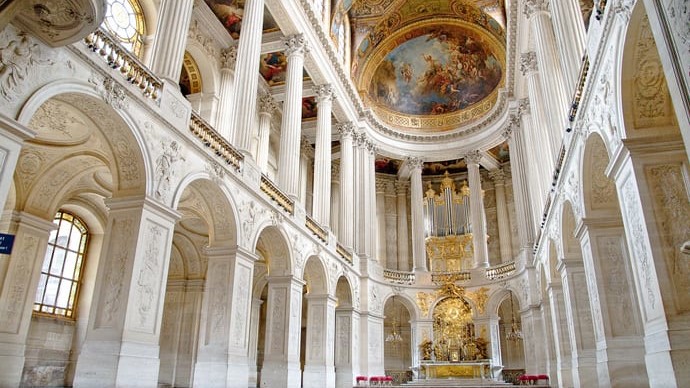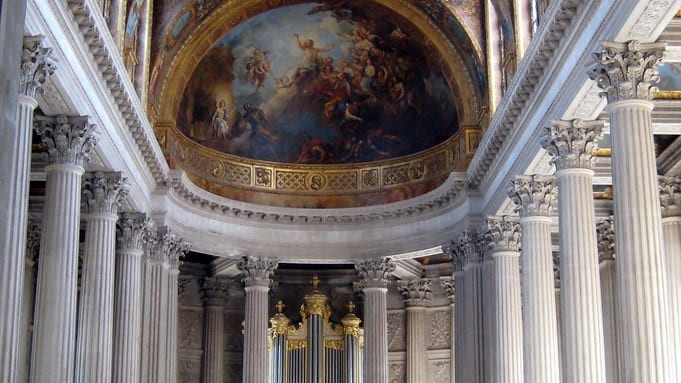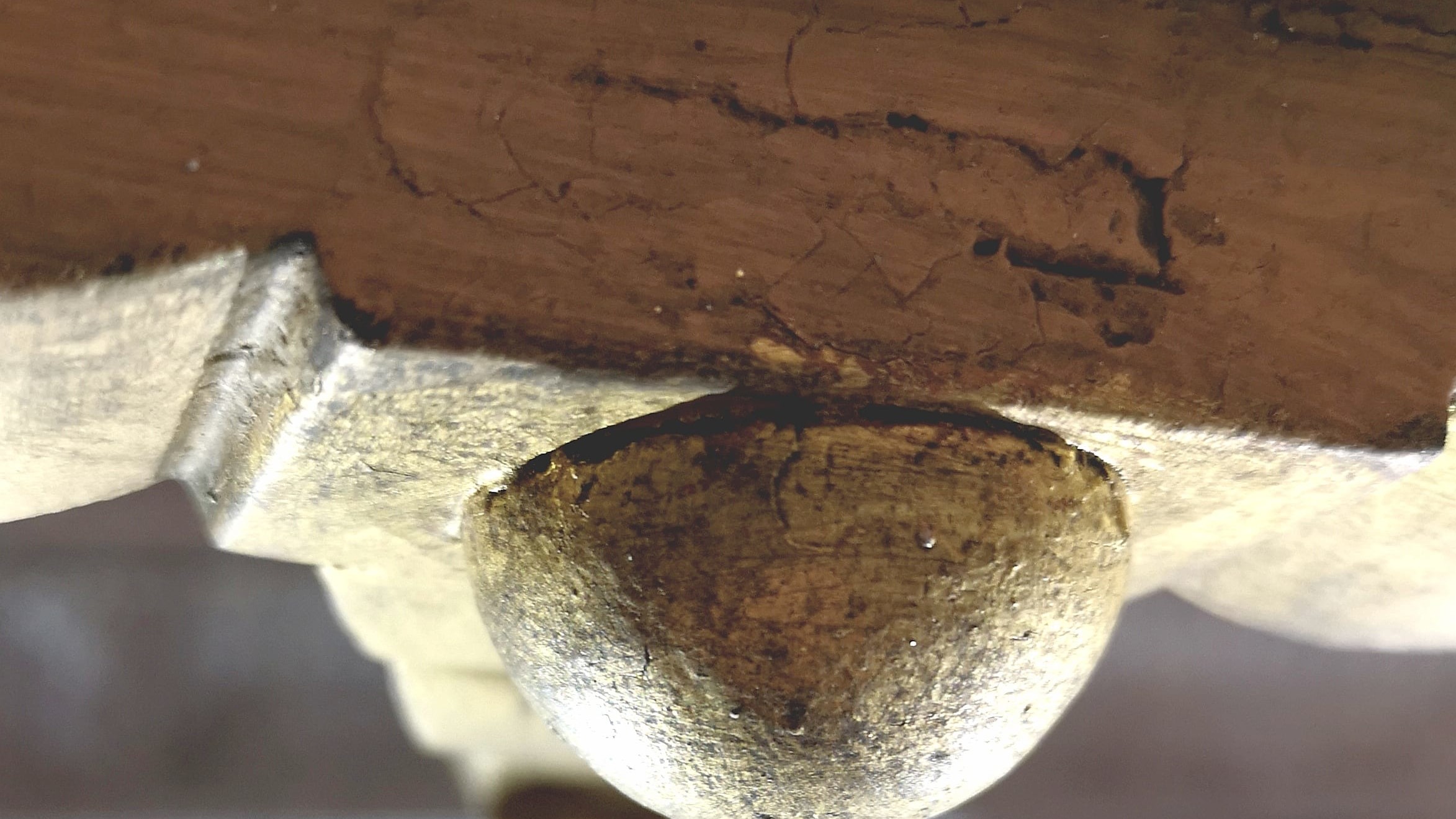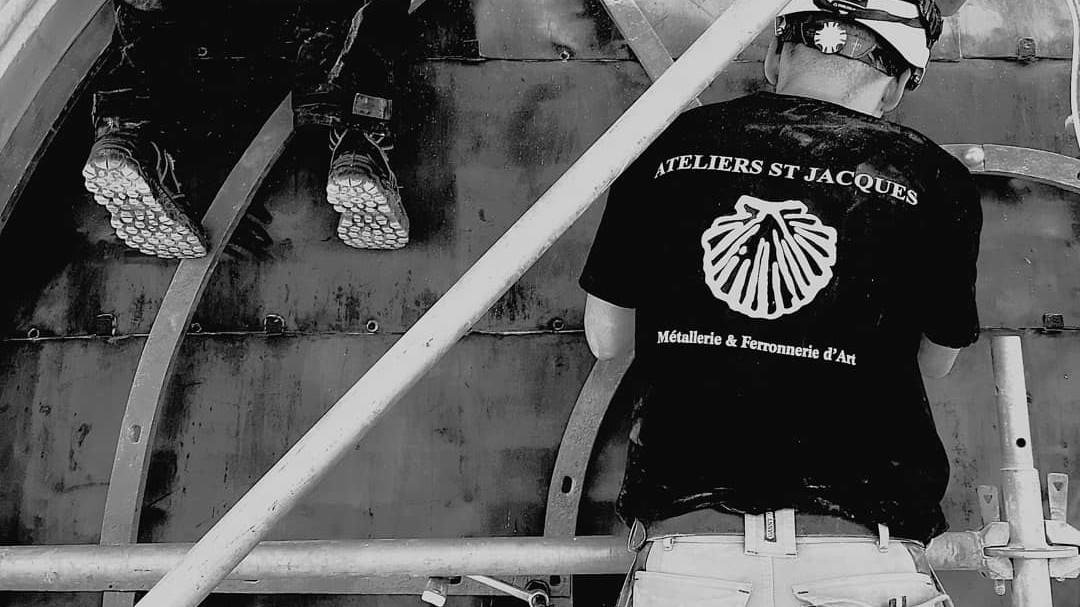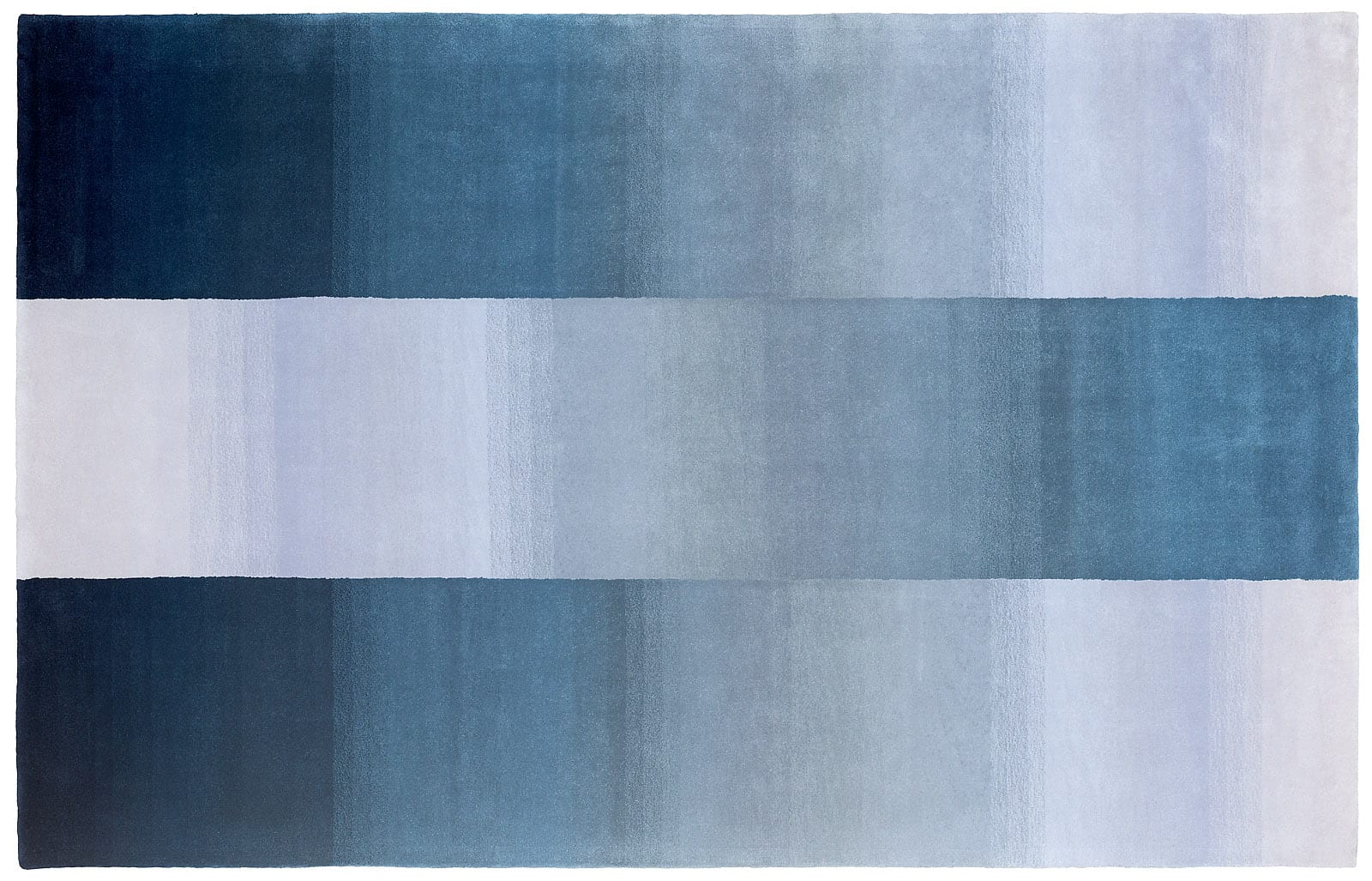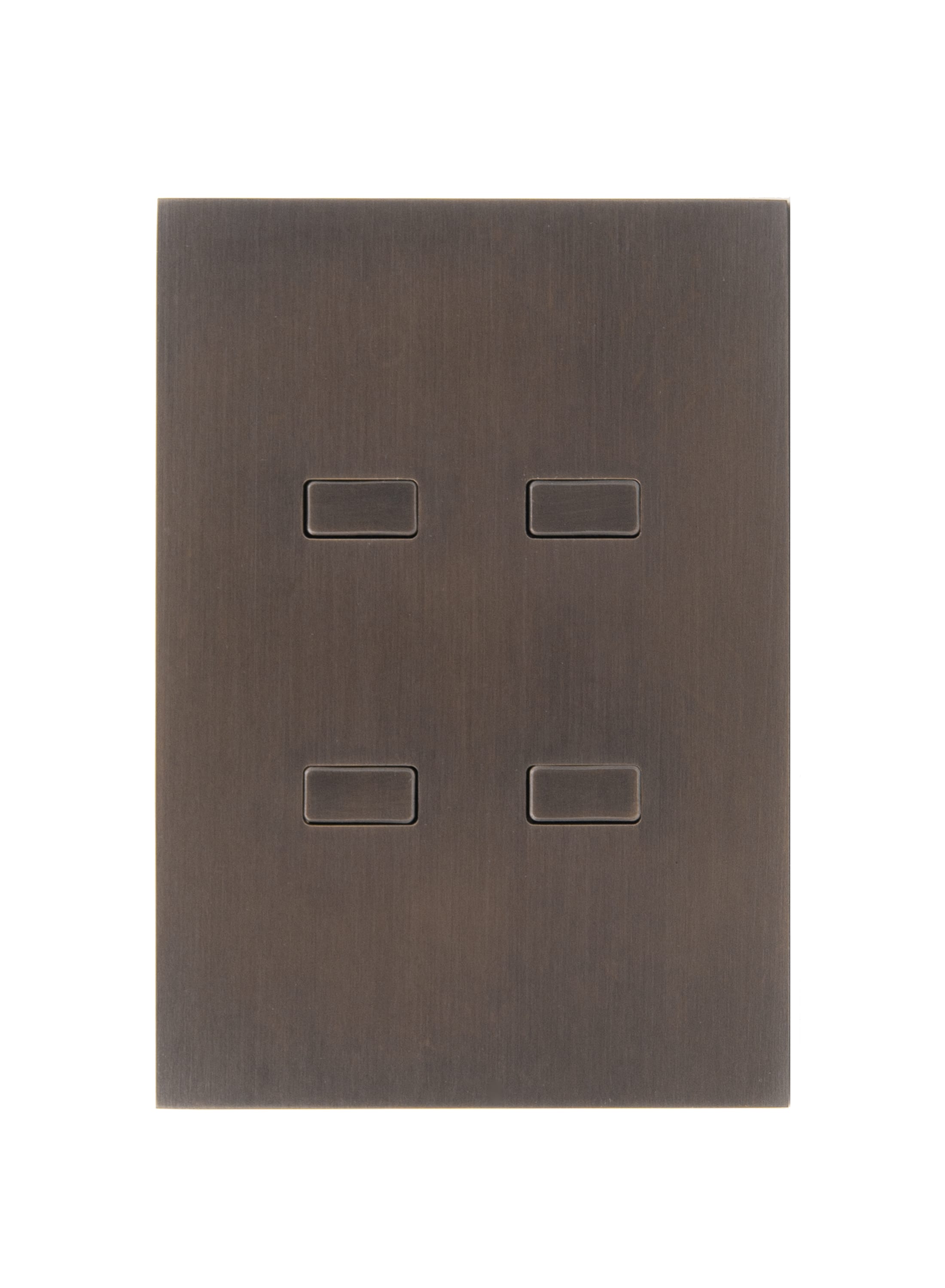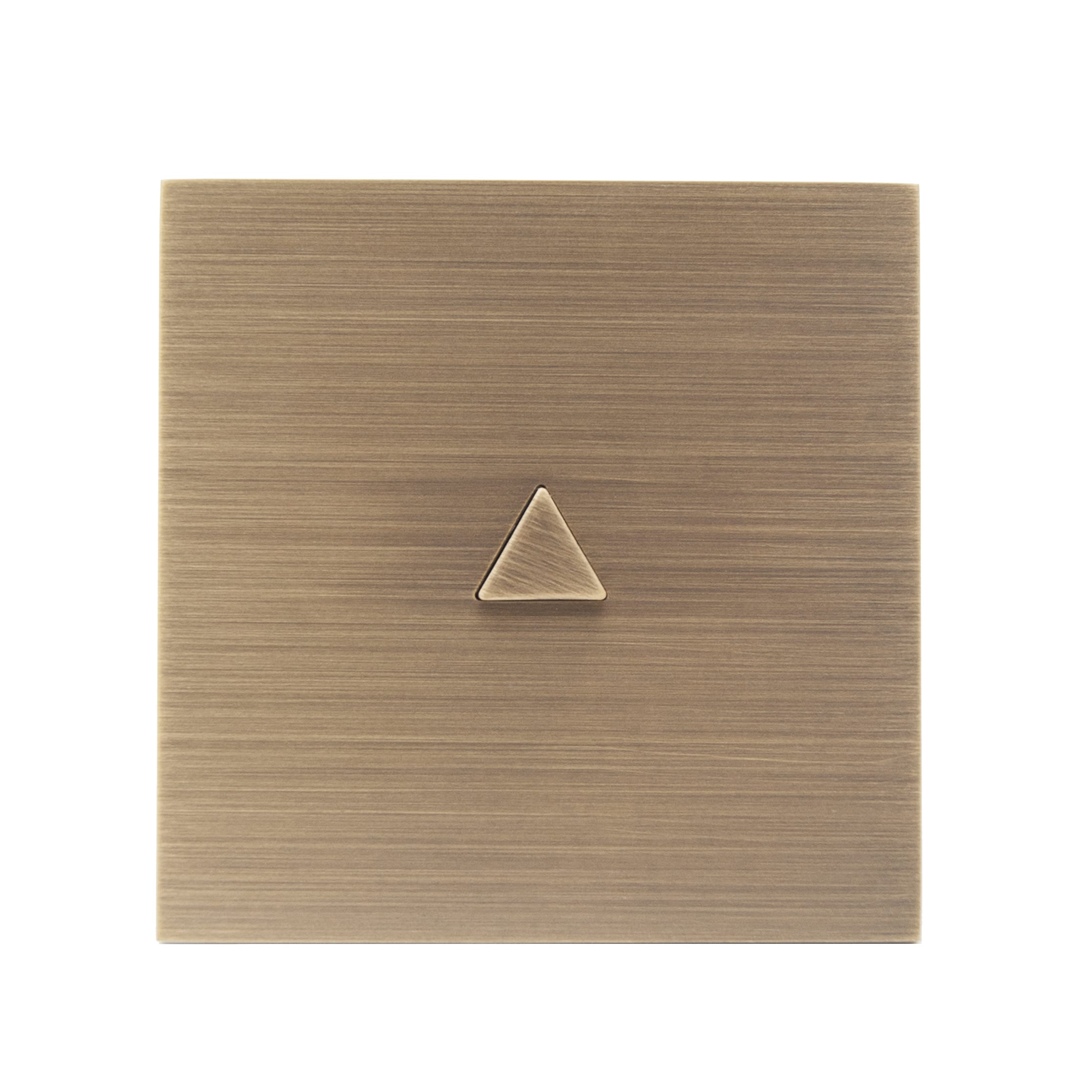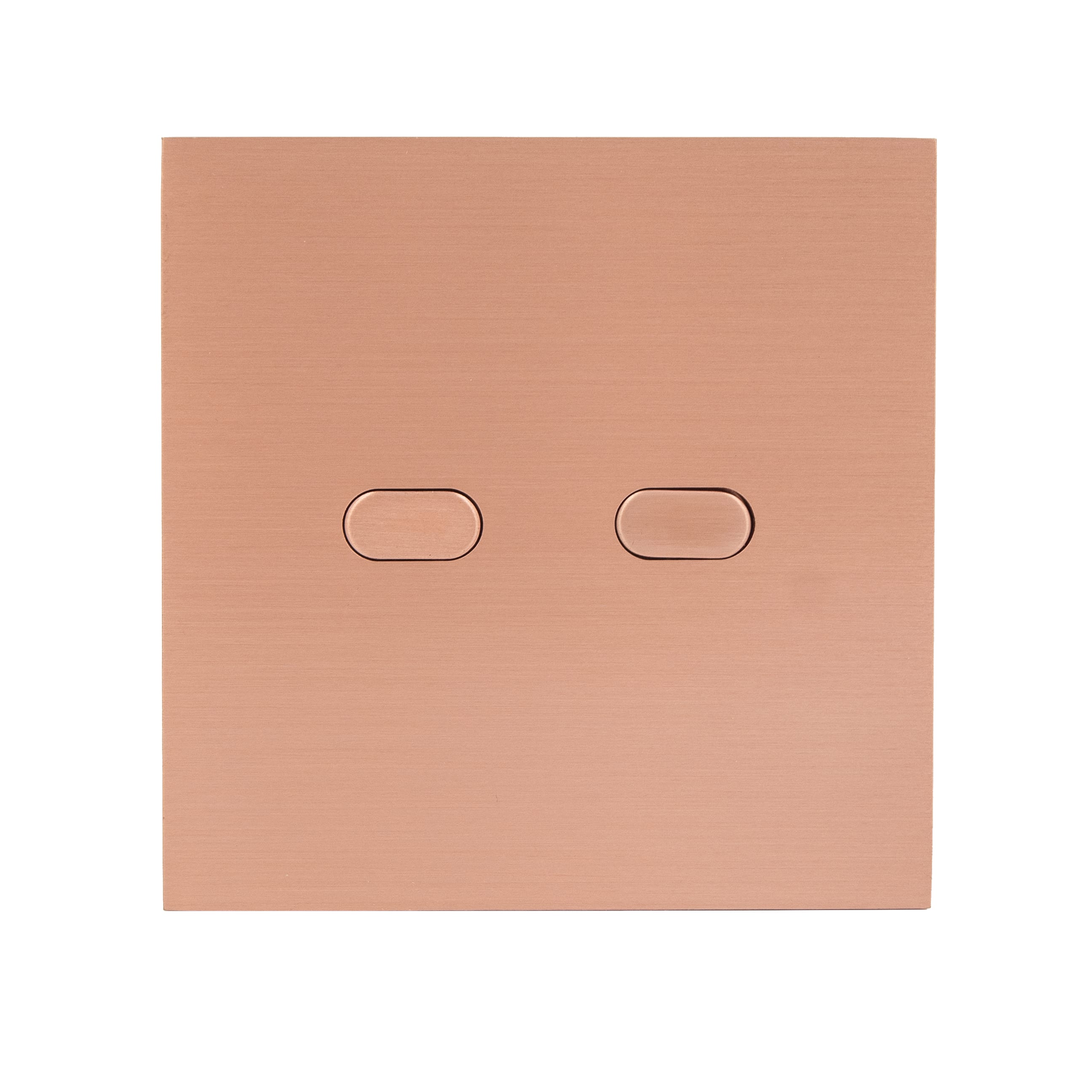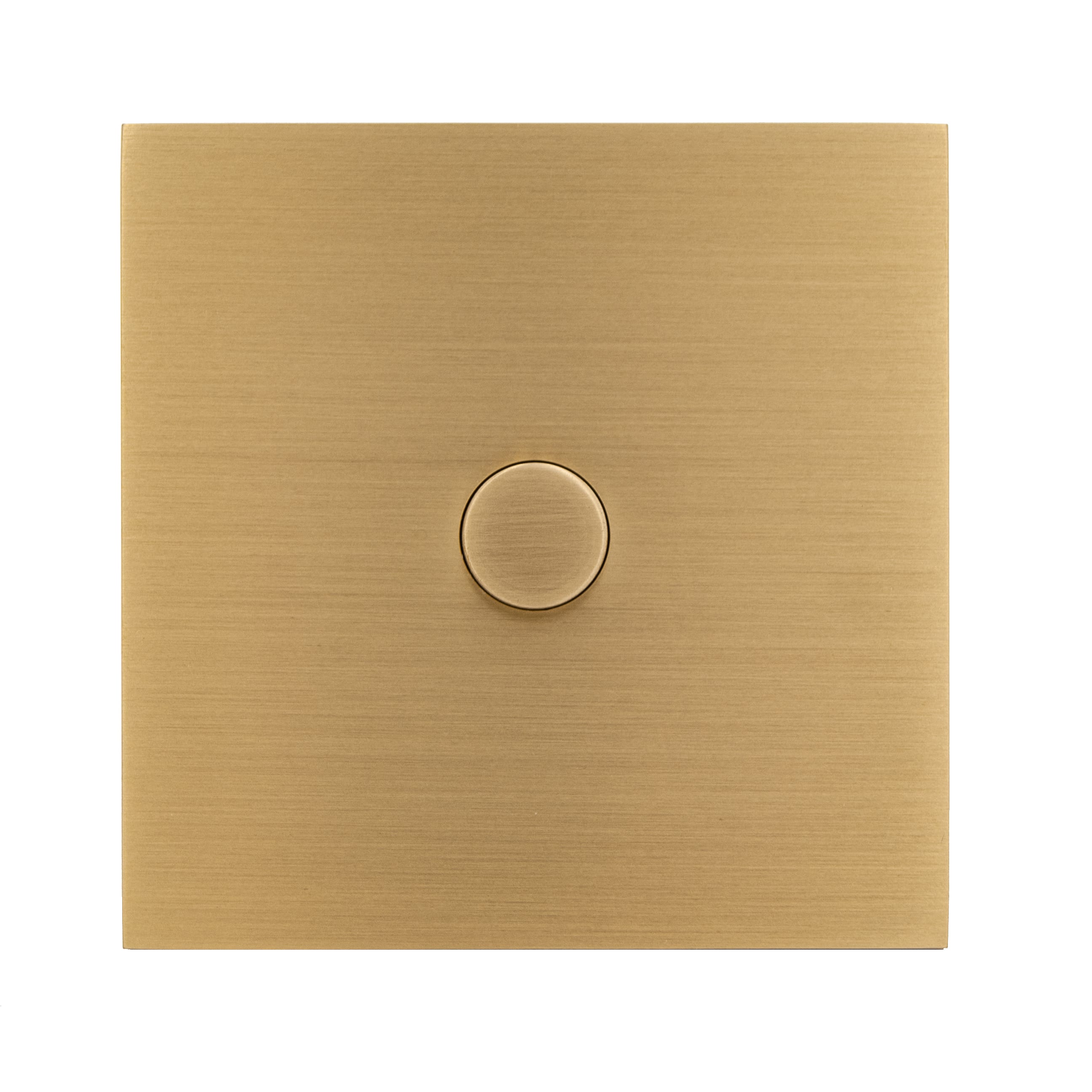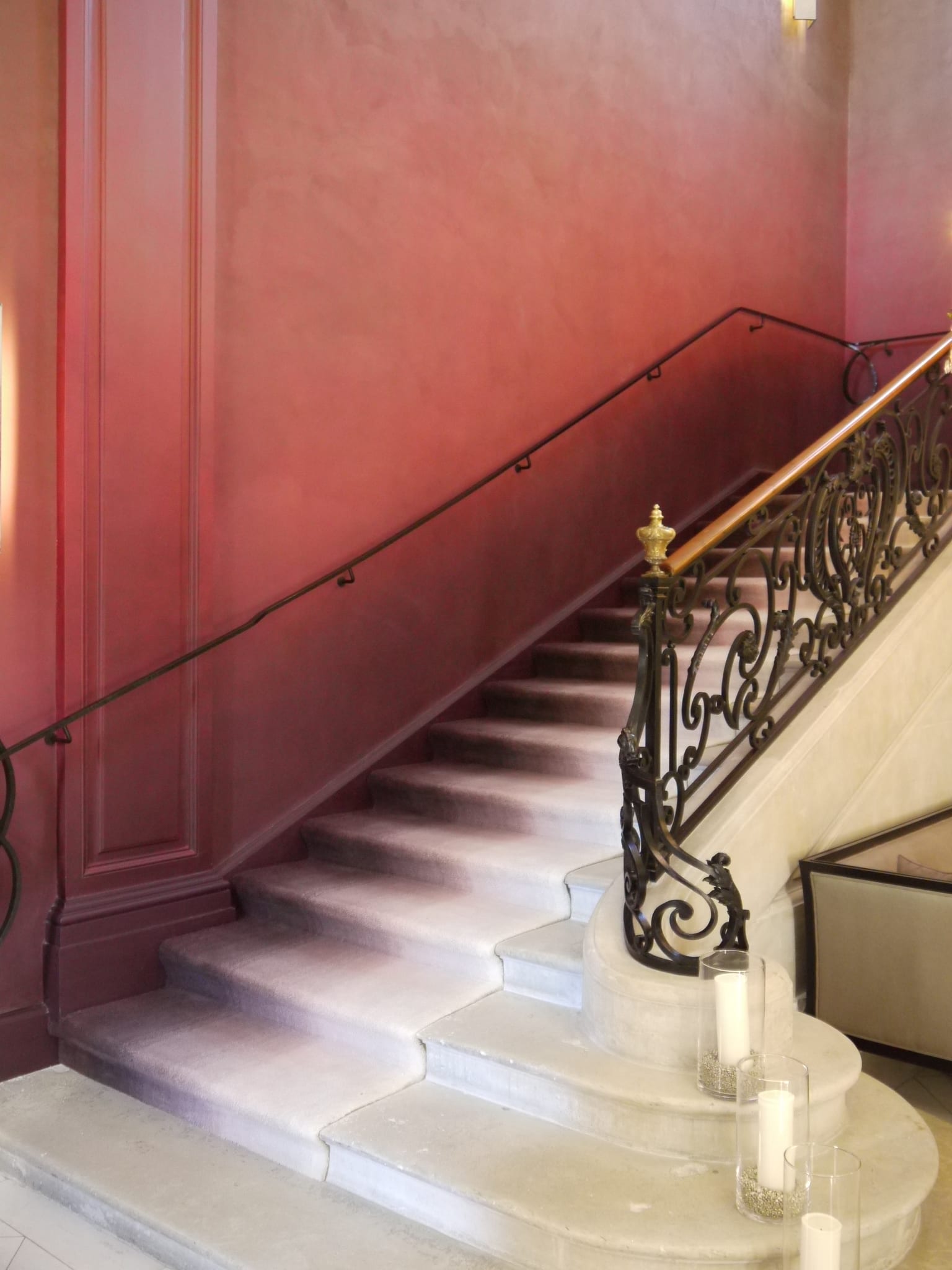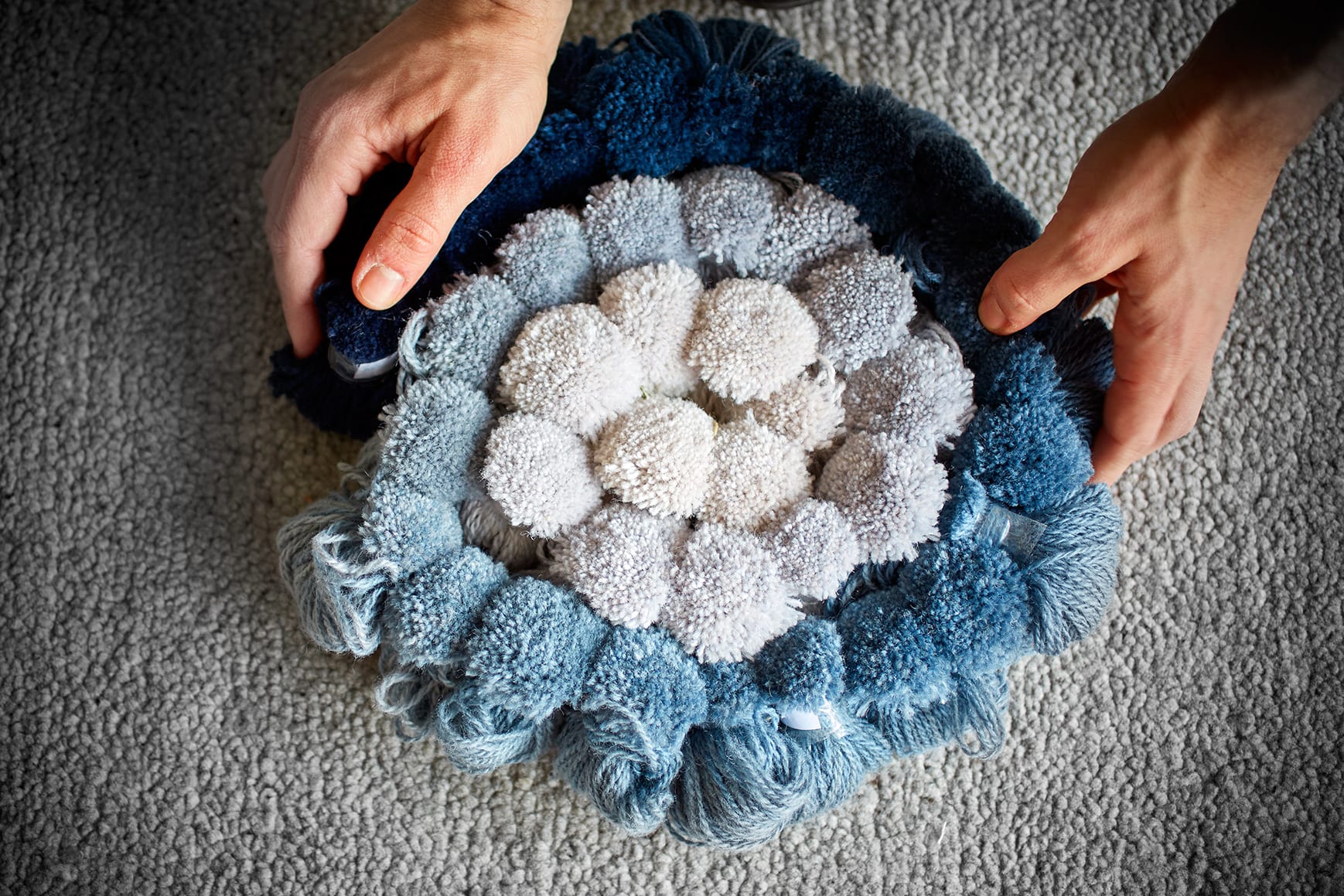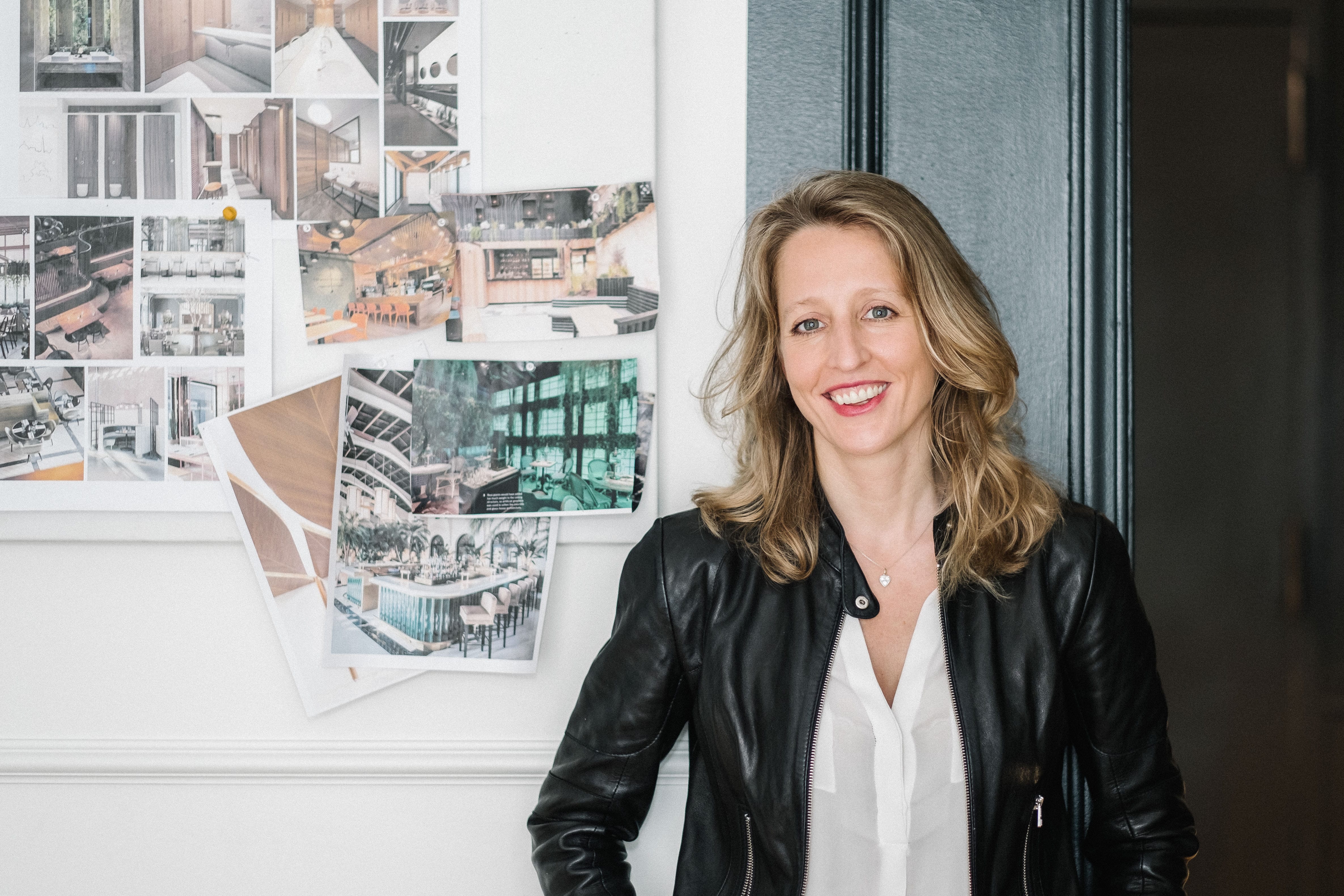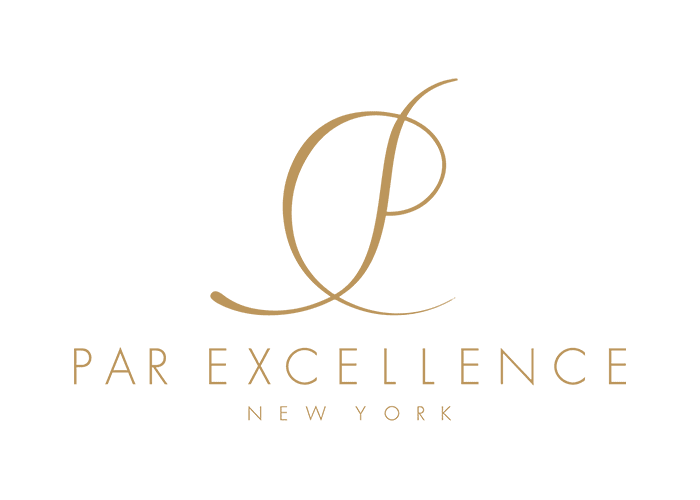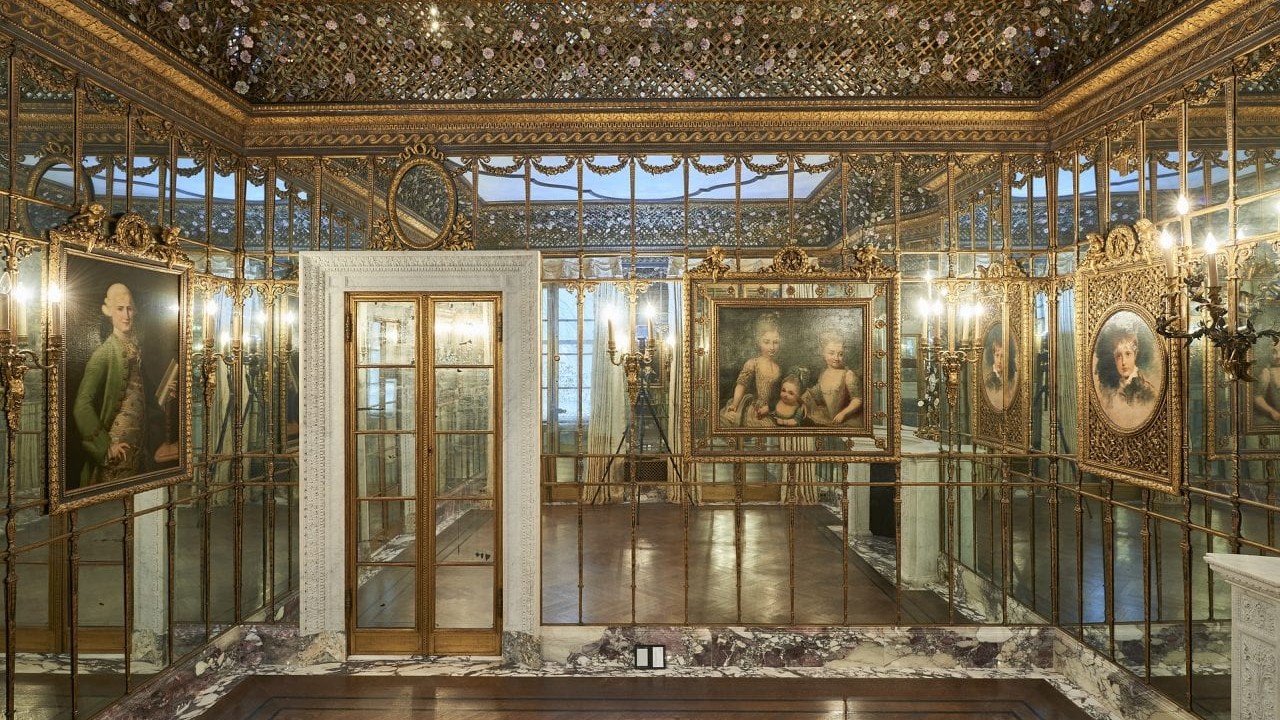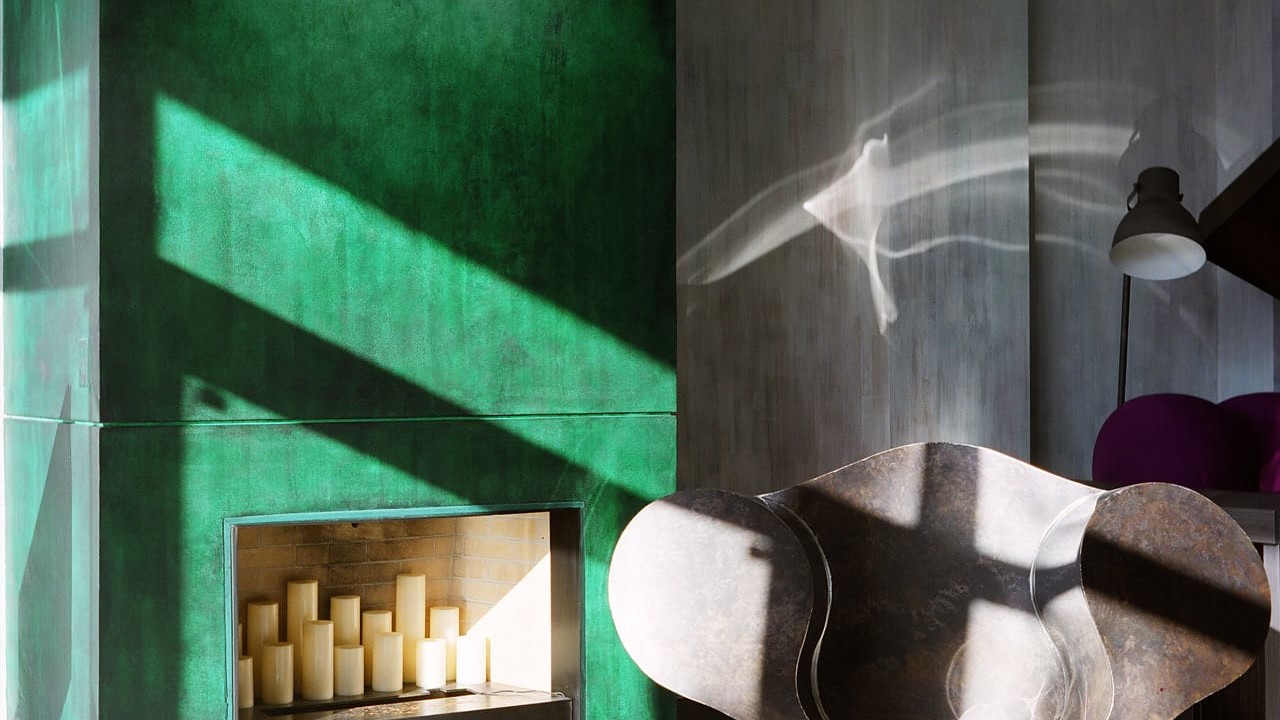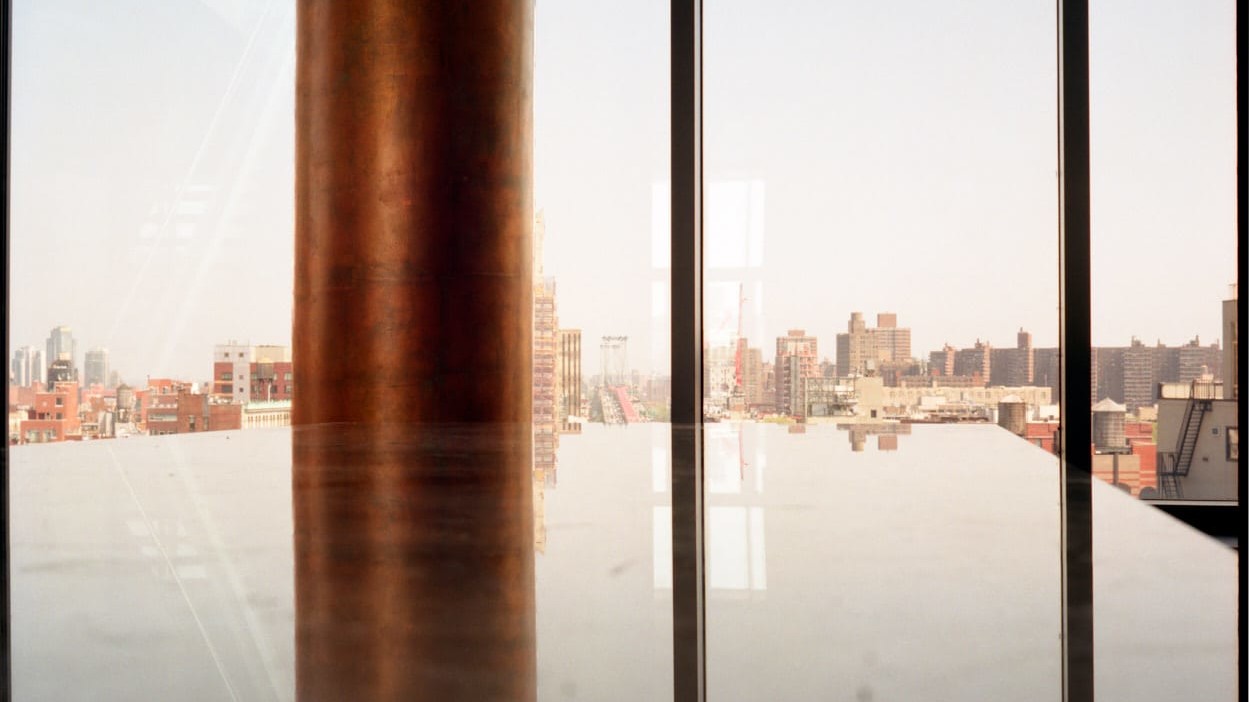The Suite Belle Etoile by Lally & Berger
The design trio Charles Jouffre (founder of Par Excellence), Margaux Lally and Luc Berger renovated the Meurice’s Belle Etoile suite. A four-bedroom duplex suite with a spectacular Italian marble bathroom with Jacuzzi. Housed on the top floor of the hotel, this suite offers exceptional views of Parisian monuments including the Louvre, the Eiffel Tower and the Sacré-Coeur Basilica.
Handcrafted details await you at every turn, creating a refined luxurious atmosphere. Par Excellence craftsmen participated in the renovation of this sophisticated suite. Manufacture de Tapis de Bourgogne workshop made rugs hand tufted in wool and silk with cut and loop pile inspired by delicate feathers. Jouffre workshop made the sofa, the bedspread and curtains. And Meljac took care of the Electrical Hardware.
AD asked the question “Is this the most beautiful suite in Paris?”. Par Excellence’s answer is definitely “Yes!’.
Thierry Lemaire - Decorator and Designer
The architect, decorator and furniture designer Thierry Lemaire is an aesthete. For the past twenty years, this man with many talents has magnified everything he touches. It affixes a singular touch to Haussmann apartments, luxurious houses, grandiose chalets, chic boutiques, and oriental palaces.
Places of character
In addition to his interest in the decorative arts of the 20th and 21st centuries, Thierry Lemaire likes to highlight contrasts, whether it is for the Automobile Club de France in Paris, a holiday home in Portugal, or a penthouse in Beirut.
Thierry Lemaire also expresses himself through strong scenographies for Yves Gastou Gallery and AD Interiors among others.
Furniture with a strong presence
An admirer of Jean-Michel Franck, Paul Dupré-Lafon and Jean Prouvé, Thierry Lemaire designs furniture of radical but sophisticated simplicity. He uses noble and precious materials such as marble, bronze, Macassar ebony, lacquers, exotic essences. In 2017, Thierry Lemaire opened an eponymous gallery in Paris in the Carré Rive Gauche. There, he presents his furniture alongside the work of talented artists, painters, and ceramists.
First participation in the PAD Paris 2019
Thierry Lemaire created an architectural performance consisting of a sober and luxurious setting in white and ochre travertine, inlaid with raised panels. Thierry Lemaire mixes materials, influences and periods always with a love of craftsmanship as well as handcrafted and custom-made products.
Christophe Grünthaler - Family Crests and Personal Emblems
Christophe Grünthaler is the heir to the founder of the family firm of the same name, and he sees things on a large scale. He brought back into fashion the heraldic art. The concept ? The revival or creation of emblems ex-nihilo and sculptures to your glory. To be transmitted from generation to generation, as some of our ancestors did through the coat of arms.
A family story
In 1877, Nicolas Grünthaler created a clock and goldsmith’s house in Lyon. With his 6 sons, he added jewelery, objets d’art as well as chandeliers and marble works at their know-how range. From now on, the Grünthaler house proposes to create unique and customized family crests and personal emblems.
Timeless symbols
The family crests appeared in Europe in the 12th century to identify knights unrecognizable behind their armor. They painted on their shields chevrons of colors. Then came the animal, vegetable and geometric figures. For a long time, those family crests were reserved for a particular elite. Only knights ennobled by the King as a result of their exploits and then the powerful aristocracy could claim it.
New aristocrats
For Christophe Grünthaler, the aristocrats of the 21st century are entrepreneurs, financiers, top athletes and people. He encourages them to mark their success by creating their own emblems. The Maison Grünthaler wants to symbolize their life story, their origins, their values, their success. Before, these emblems were affixed on silverware or jewels. Today, you can find them on upscale contemporary articles like tableware, bags, perfume bottles, candle holders or even a denim jacket! These items are selected from luxury homes, designers and exceptional craftsmen.
Since one of the goals is to show its success, why not reproduce these emblems on monumental sculptures? Even to include Street Art! This is the brilliant idea of Christophe Grünthaler.
Far from traditional collections, Christophe Grünthaler creates works that mix tradition and contemporary art such as signet carvings measuring 20 cm to more than 2 meters. And the materials are traditional or more moderns: resin, chrome, bronze, gold, leaf, silver.
A desacralized symbol
“I take the code of the historical signet ring and divert it from its primary function. The jewel becomes a work of art, testifying to the richness of a life. Engraved on a prestigious symbol, this unique story, yours, represented through the personal emblem, becomes the theme of sculpture.”
So Christophe Grünthaler desecrates the signet ring through these creations. Some models are directly inspired by Street Art with strength of tags and graffiti! His giant signet ring reminiscent of the monumental diamond Jeff Koons, upsets the received ideas. Imaginative in size and color, its visual impact is strong. The colors are bright, the most extreme fantasy is at the rendezvous!
Share
Ozone Interview by Signatures Singulières
Etienne Gounot and Eric Jähnke, two former industrial engineers, created together the company Ozone in 2000. Their concept is based on close collaboration with architects and private individuals to find the perfect lighting, the right lighting.
The art of architectural and decorative lighting
The work on light sources serves several purposes. First of all, the light comes to supplement the natural light of day and night. Then, it highlights shapes and spaces. Finally, bring this little extra that changes everything: the magic of the light metamorphosis. A ray of light judiciously illuminates such detail of architecture that otherwise would go unnoticed. And everything is singularly different. Etienne Gounot and Eric Jähnke are scenographers of unparalleled light. They know how to emphasize contrasts, give rhythm and play with different atmospheres. In addition, Ozone creates its own lights: chandeliers, ceiling lights, suspensions etc. And some of their products are signed by Michel Boyer, Jean-Michel Wilmotte, Joseph Dirand, Pierre Paulin and Régis Botta.
A craft creation
Ozone products combine Parisian artisan tradition with the latest LED lighting technologies. Indeed, Ozone manufactures its lighting in Paris and assemble it in the workshop of the street Notre-Dame of Nazareth in the Marais. This is where Etienne Gounot and Eric Jähnke seek to constantly improve the performance of their luminaires with contemporary design. They screen new materials and new techniques and frequently create unique pieces. For example for Elise Saab, Ritz Carlton or Mauboussin, as well as Saint-Louis. The Ozone collection is now distributed in Europe, the United States and Asia.
Interview with Etienne Gounot – Co-founder of Ozone
What made you want to get involved in lighting design?
Etienne Gounot: A desire both practical and poetic. I did not find any fixtures for my apartment and decided to design and make it myself. In doing so, I realized that the light evoked memories of my life, moments of wonder. It also created an inner calm, an impalpable dimension that went well beyond the object itself. The trigger was thus produced and I spoke to my friend Eric, himself very sensitive to the aesthetics of light and creation. Ozone is born. We were great beginners in the area, with no training or address book.
Are contemporary French luminaries immediately recognizable?
Etienne Gounot: The realization of non-industrial French contemporary lighting often relies on the arts and crafts that are still quite alive in France. Thus, as with Ozone we can find a modernized and refined approach to the work of metal, stone or glass. French designers also likes to draw their inspiration from the rich history of the decorative art, while marrying them to the abstraction of computer-based design. Nevertheless, borders today have less meaning. With Eric, we feel really close to some American, Japanese or Belgian projects.
You have joined Par Excellence, which promotes French craftsmen in New York. What do you expect? Do you already have benefits in this way?
Etienne Gounot: Par Excellence contacted us a little more than two years ago. We were happy to join this group which gathers the finest French craftsmen in New York. Although today we have a slightly different approach, oriented more towards the creation of collections than custom-made, the technical and commercial synergies between the different partners are incredible. New York is perhaps the most intense market in the world. We are much stronger together.
What challenges would you like to take up soon?
Etienne Gounot: The US is a very dynamic market where our “bold and delicate” style is well received. The challenge is now to make of the US our first market with a local branch that would drive business and technical development.
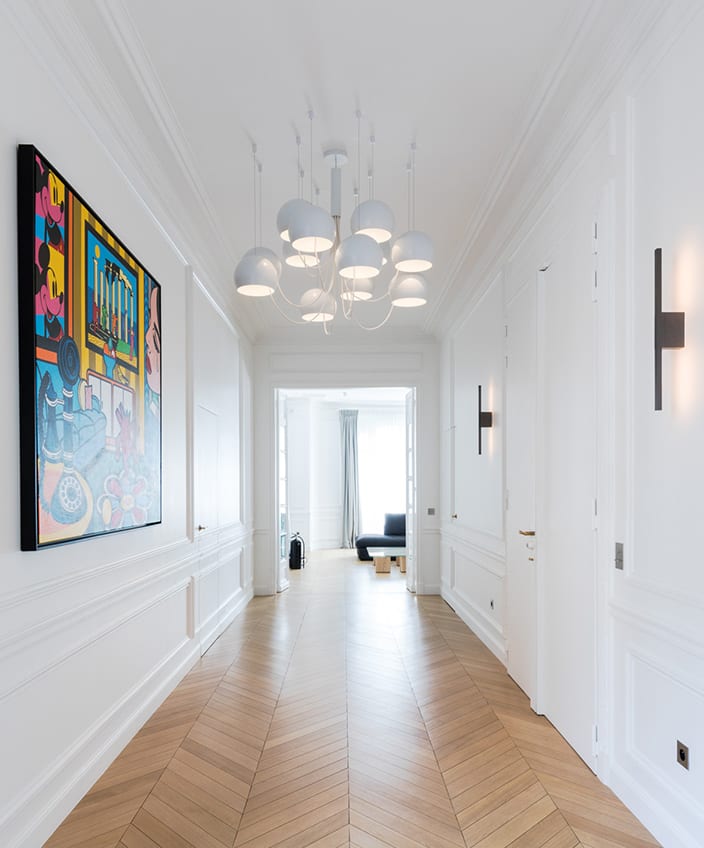
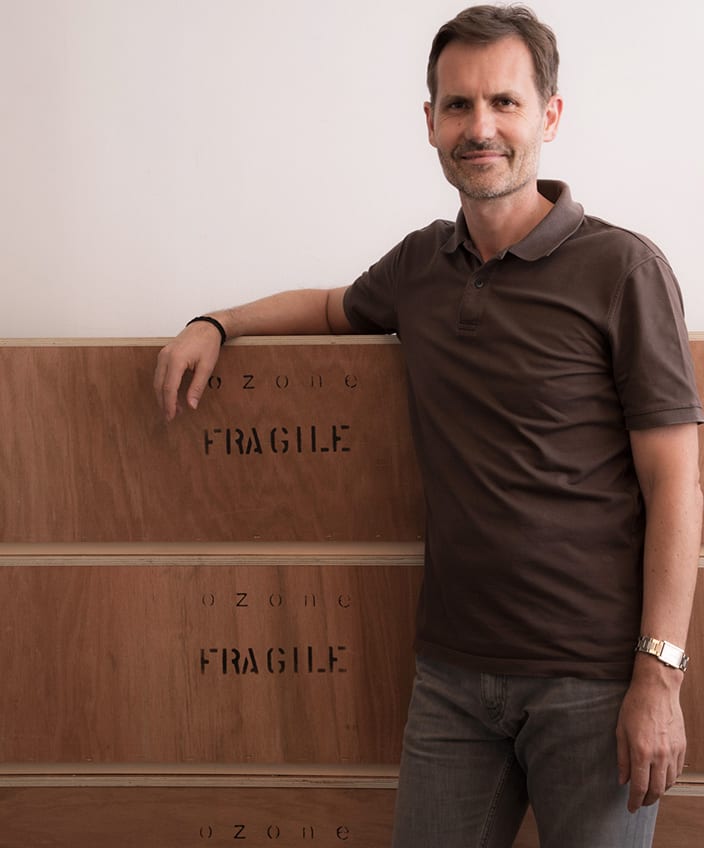
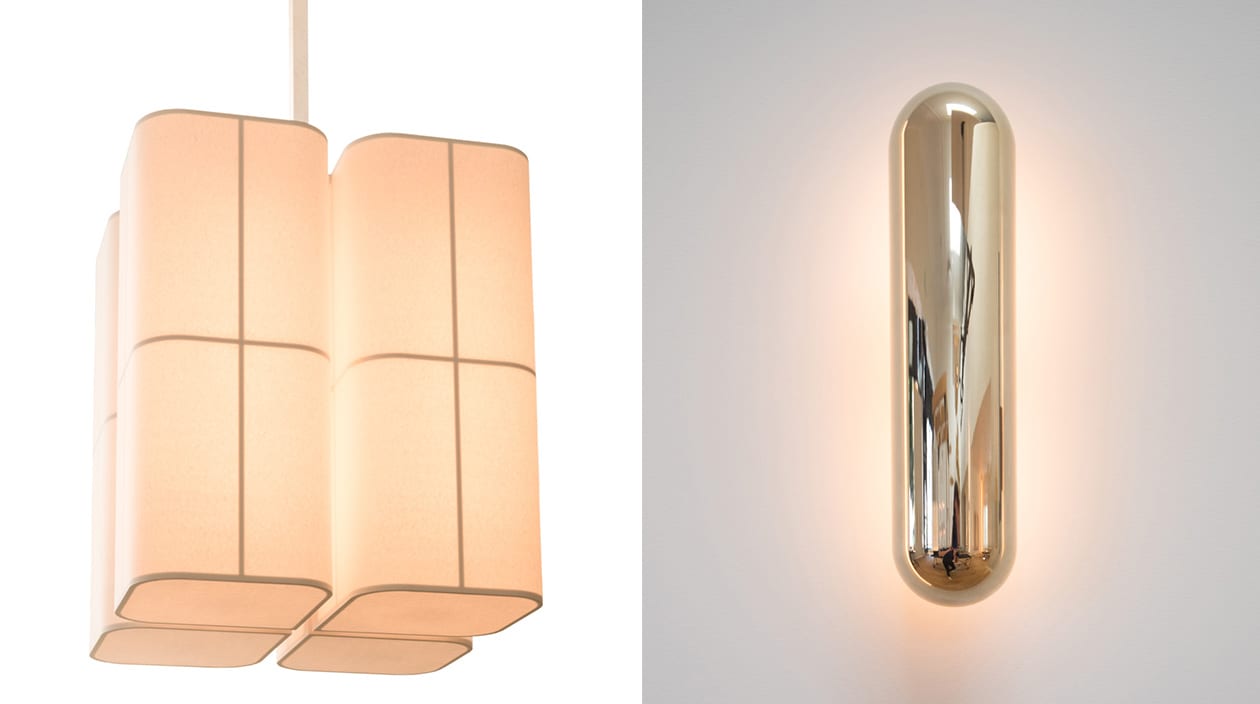
Share
The Saint-Jacques workshops renovate the Royal Chapel of Versailles
The Royal Chapel of Versailles Castle is the last major building of Louis XIV for his Palace. It impresses with its elegance and elevation borrowed from Gothic architecture, the magnificence of its decoration and the incredible technical quality of its realization. Throughout the construction period, which lasted from 1687 to 1710, the architectural project matured slowly and found its final shape thanks to the architect Jules Hardouin-Mansart. Influenced by ultramontane architecture, the building is nevertheless part of the great French tradition of palatine chapels and appears as a manifesto of modernity.
In all respects, this building is one of the most striking in the whole field, one of the most accomplished and one of the least transformed. The Ateliers Saint Jacques have been in charge of the Chapel bays and wrought ironwork restoration for a year and a half.
These bays – about eleven meters high – are authentic masterpieces of the early eighteenth century French blacksmith. From a visionary design, incorporating modern systems still used today, they are the case supporting the stained glass windows that make the space so incredibly bright. Without the use of this ironwork technology, opening such bayes in clear lanes would have been impossible. Here, the art of the master glassmakers is sublimated by the talent of the masters iron-workers, thus conveying to Versailles a crown of light.
It is therefore with great respect and pride that the Ateliers Saint-Jacques dismantle, inventory, restore and reinstall the irons of these works. Rusty elements are cleaned, twisted irons are returned to their original shape and the missing pieces are reforged.
This project is a feat for the Ateliers Saint-Jacques metal workshops. It is the result of nearly six months of research, conducted by their design office in partnership with engineering teams and architects of historic monuments. During this pre-restoration stage, they inventoried each glass, dating and examining it, and inspected each screw or bolt. This is how they recounted nearly 300 years of successive restorations, some more successful than others, before deciding what direction to give to their own work. Because this new restoration is the most important since the construction of the bays: from the preparatory work to the final gilding, through the dismantling of the original stained glass windows or the restoration of worn out beadwork. The companions* work to give them back their original shape, inch by inch. They try to take into account all the issues related to the restoration of a monument of such importance. They work therefore with great rigor and extreme minutia. They are aware that by touching these works they touch the most valuable heritage of France, thus being inscribed in its History, its conservation, and its future.
Share
Par Excellence's novelties
MELJAC offers new options in the Damier collection of keypads
MELJAC, the leader in bespoke electrical hardware, now offers a choice of button shapes (round or square) and settings (flush or raised) in the Damier collection. Additionally, backlit engravings are now available to provide gentle illumination. These new options provide even more flexibility and freedom for the controls of lighting control and home automation systems.
The Damier collection features straight edges, concealed screws and low-profile push-buttons; enhance your space with clean lines and hand-finished, solid brass (available in over 25 finishes. The Damier colllection can be combined with numerous electrical components based on project needs. To give its customers even more choice, MELJAC has created new switch shapes: round, oval, triangular, rectangular, flush to the panel or raised, whatever you prefer. Bespoke and made-to-order are still the keywords at MELJAC, with each product uniquely crafted for your specific project.
Engraving options include words, printed symbols, icons and more.
Multiple sizes and configurations available.
Pricing: from $309
Manufacture de Tapis de Bourgogne – Focus on “OMBRE Rugs”
The Manufacture de Tapis de Bourgogne has built its reputation on its expertise in manufacturing custom ombre and gradient carpets.
Their workshop based in France have an extraordinary stock of yarns: over 3000 colors of wool, silk, raffia, linen, lurex, viscose… Thanks to this stock, they are able to produce a custom color sample in one week. Their in-house design studio can create gradient and ombre from 2 colors to dozens of colors.
Interior designers as Bruno Moinard, Pierre Yovanovitch, Peter Marino, Philippe Starck and artists as Sonia & Robert Delaunay, Victor Vasarely, Zao Wou-Ki or Keith Haring have produced colorful rugs and carpets in their workshop.
Ozone has developed two new models of Marienbad and Brasilia Lamps.
Marienbad SW60
Wall washer with a power of 1000 lumens. This model has been developed to harmoniously illuminate a wall up to 3 m wide.
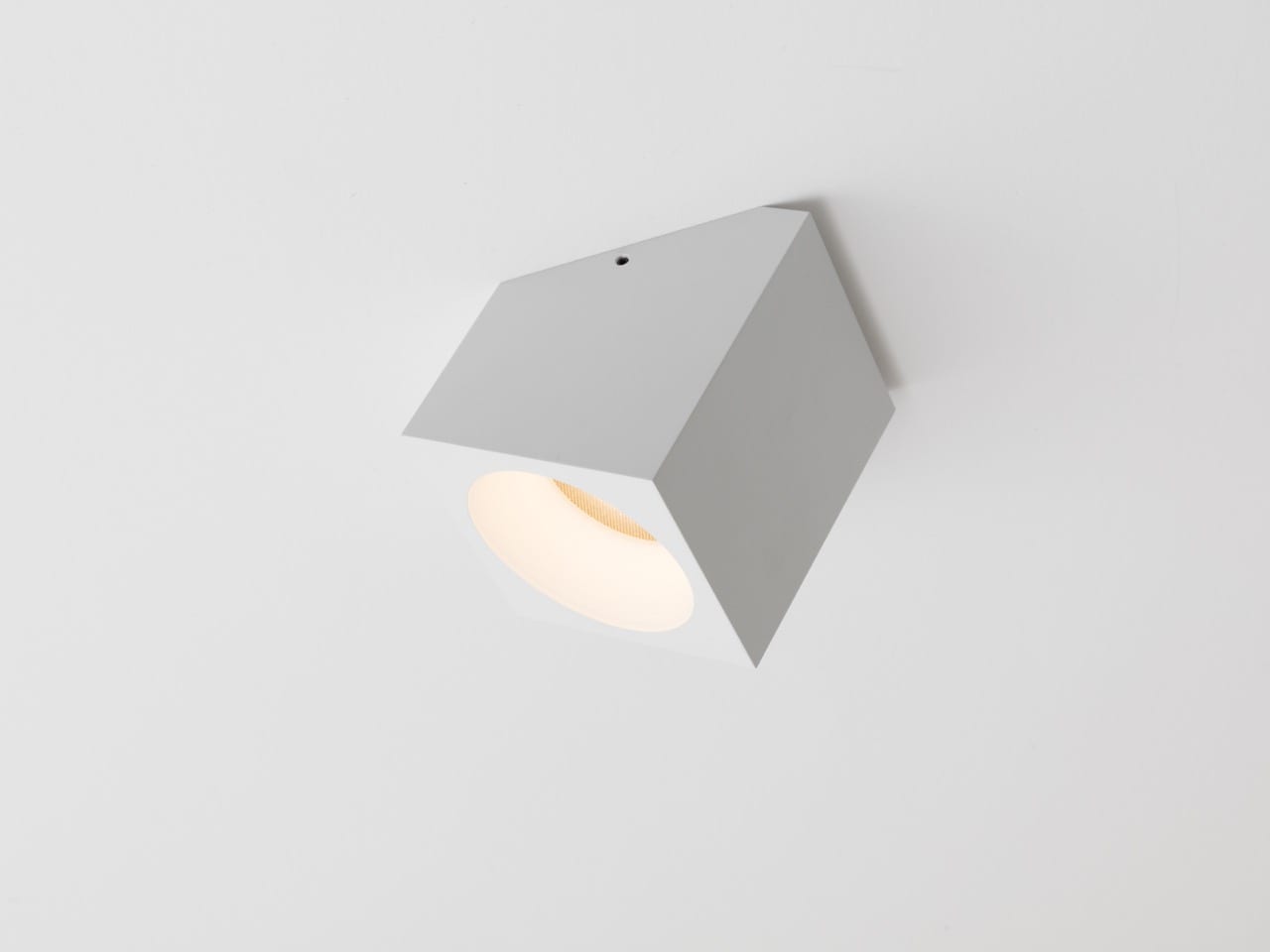
Brasilia PL
New compact version (27.6×27.6×31.5 inches) of Michel Boyer’s famous Brasilia chandelier. This model has been developed for easier integration into architecture. Other novelties are being developed, such as the Luxembourg chandelier in White Onyx and the Parisienne Concorde suspension with three globes.
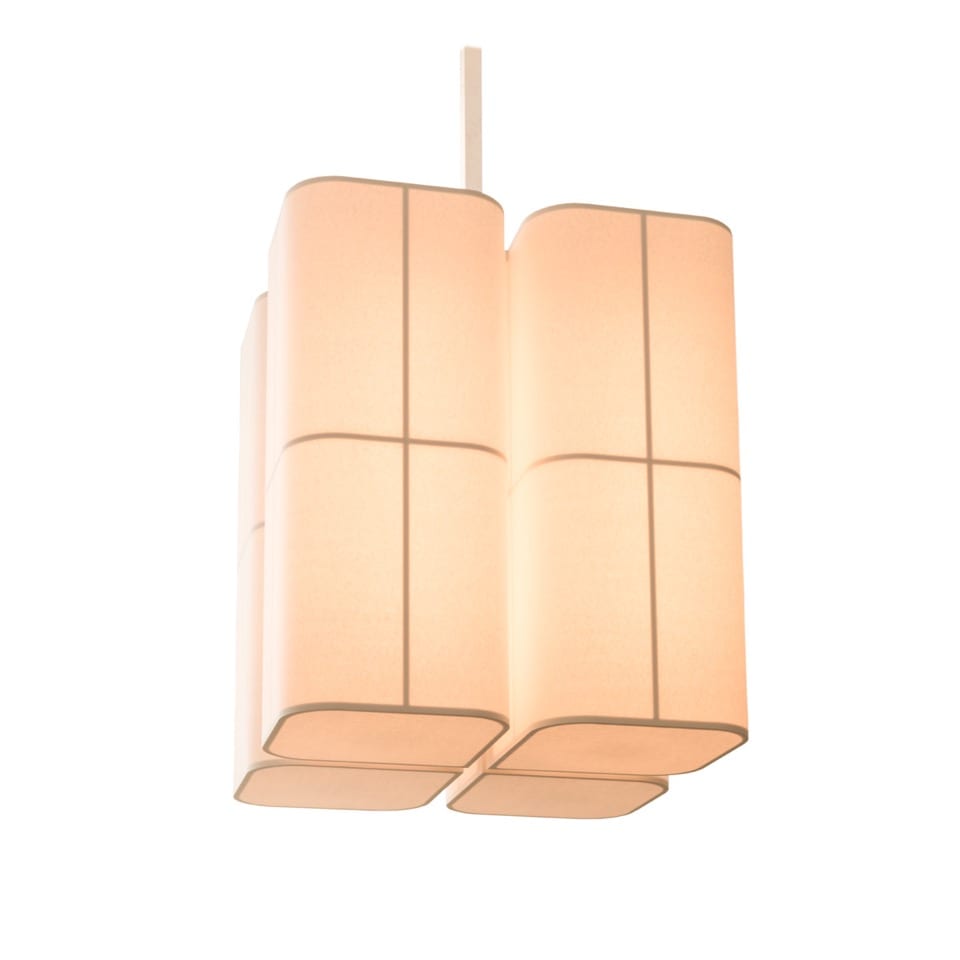
Interview with Delphine Mauroit - DMD Architecture
By Par Excellence
Delphine Mauroit is a Belgian Interior Designer. She founded DMD & Architecture in the heart of New York City in September 2009. Rising from Senior Designer to Head Architect, Delphine Mauroit has been recognized for her unparalleled creative talent and professional success in global high-end residential, innovative design and architecture projects, offices…
Interview.
Par Excellence – What originally made you want to become a designer ?
Delphine Mauroit – Since a very young age, I have always been fascinated by the way houses were built, how they were arranged inside, materials that were being used to build them… So, I naturally opted for architectural studies in Belgium. It is only when I was hired by Yabu Pushelberg in Toronto that I realized what an amazing field interior design was, and that was a complete revelation to me!
Par Excellence – How would you describe your approach to design ?
Delphine Mauroit – Interior design is about creating attractive 3-dimensional spaces, of course. Spaces that are materializations of a client’s dream, or brief. But I believe for a space to really ‘work’, you need to add a fourth dimension. You need to understand how humans move around, how they socialize around spaces… in order to create some kind of flow, a soul to the place. And that’s what makes my approach different I think.
Par Excellence – What is the role of the designer according to you ?
Delphine Mauroit – I think the most important role of a designer is to be a sounding board for his client first. I love that initial briefing phase with clients when they draw you into their world and what they have in mind. I love seeing the excitement in a client’s eyes when your inspiration meets theirs.
Par Excellence – Was there a moment that made you go out and start your own firm ?
Delphine Mauroit – That moment was a kick in the rear end when I was let go by Rockwell Group in New York, 10 years ago (oh my god…). I was sad but I also felt a great sense of relief, a sense of freedom to finally be able to ‘do it my way’. When I walked out the door with that little check in my hand, I realized that I was ready to go solo, and I strangely did not feel scared at all.
Par Excellence – What made you decide to start your own business rather than working for someone else?
Delphine Mauroit – As soon as I started my business, a couple of clients came on board very quickly through my personal network, and it snowballed from there. I never looked back!
Par Excellence – Could you tell us about what projects you are working on at the moment ?
Delphine Mauroit – Currently, our 2 main projects are a 5000 square-foot apartment in Tribeca, and a 6000 square-foot office space on Fifth avenue for a very successful and innovative tech company.
Par Excellence – What is the project you are the more proud of ?
Delphine Mauroit – I will have to say that my very first project, “The Raines Law Room” speakeasy is probably the one that is closest to my heart. That was 10 years ago and it is still celebrated as one of the finest cocktail lounges in New York, year in year out. I absolutely love the “Elsie rooftop bar” not only because it has the name of my baby girl haha! But also, because it’s quite stunning and has been selected for the ‘Restaurant and bar design awards’. Fingers crossed.“Dear Irving” on Gramercy has won the best bar design by Time Out magazine.The “Harlem house renovation” because it was crazy team work with my husband. We turned it into a wonderful haven. I know you asked which project (singular) I was most proud of, but there are so many I loved working on! They all occupy a special place in my heart for various reasons.
Par Excellence – What is your dream project ?
Delphine Mauroit – This might sound silly, but I would love to design the first human base on planet Mars. I’m only half joking. I would absolutely love to rethink every aspect of how humans live in their habitats. On a more terrestrial level, I would love to design a hotel again, and a school.
Par Excellence – What is your motto ?
Delphine Mauroit – “Do what you love and everything will fall into place…”
Raines Law Room Speakeasy

Elsie Rooftop Bar - Times Square

Dear Irving Bar

Harlem Renovation House

Share
Par Excellence Renaissance
Par Excellence News
With the ambition to strengthen the links between the finest French craftsmen and the greatest interior designers in New York, Par Excellence is excited to reveal the opening of a very new chapter. New showroom at the heart of Noho, new logo and new website, new partner and finally, a team more motivated than ever! But that’s not all, a lot of projects are yet to come! Stay tuned.
Our new team
Par Excellence grows and welcomes three newcomers to promote the high-end know-how “à la française”: Laetitia Dominguez, Agathe Peigney and Camille Dubourdieu-Rayrot! The new team is very excited to be part of this adventure!
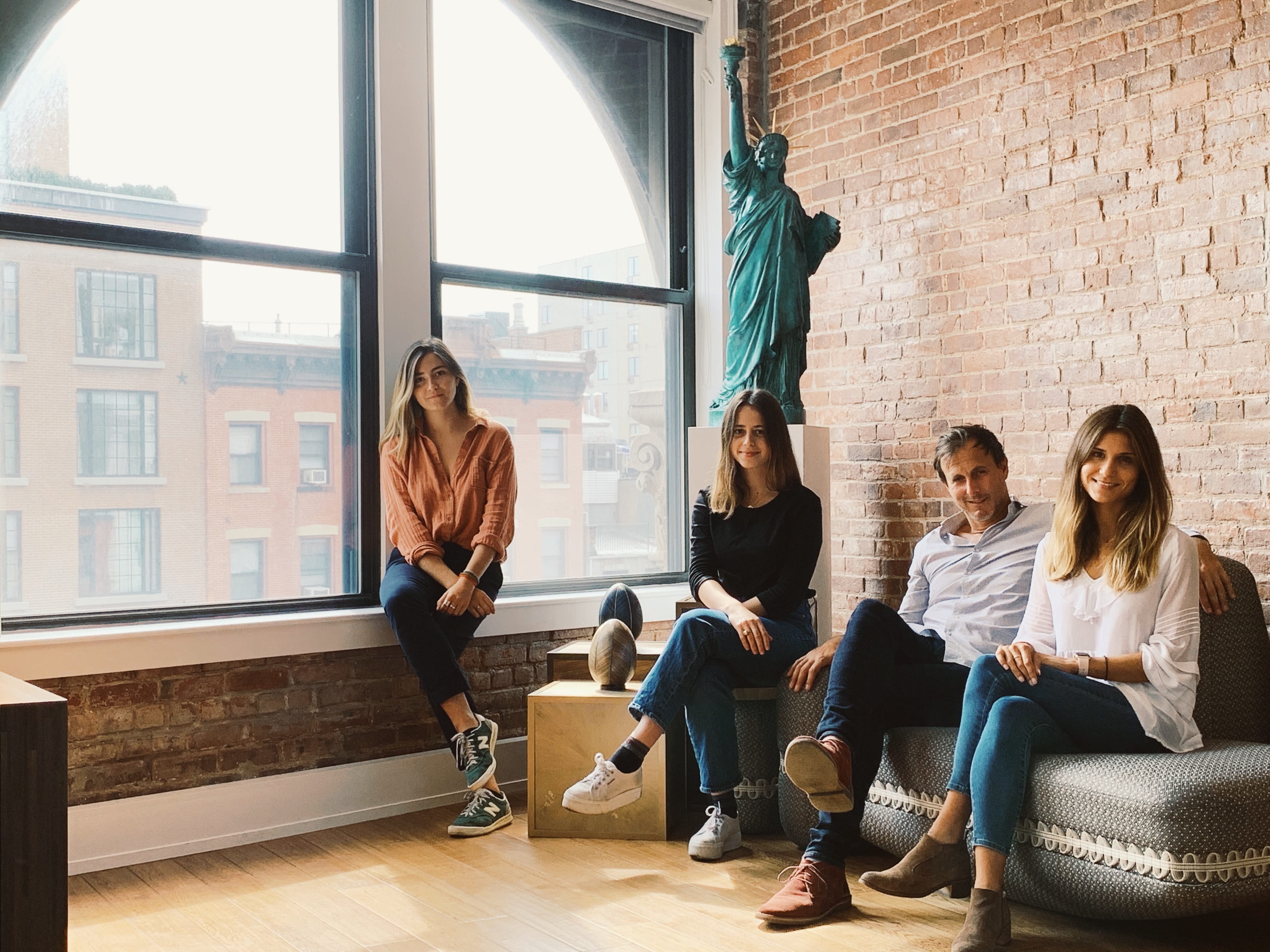
Our new partner
The Ricou Workshop joined Par Excellence! They master two unique know-hows: the creation of painted decorations and the restoration of paintings and sculptures for historical monuments. After the Venetian Room, the Atelier de Ricou will take care of the renovation of the Ball Room of the French Embassy cultural services in New-York.
